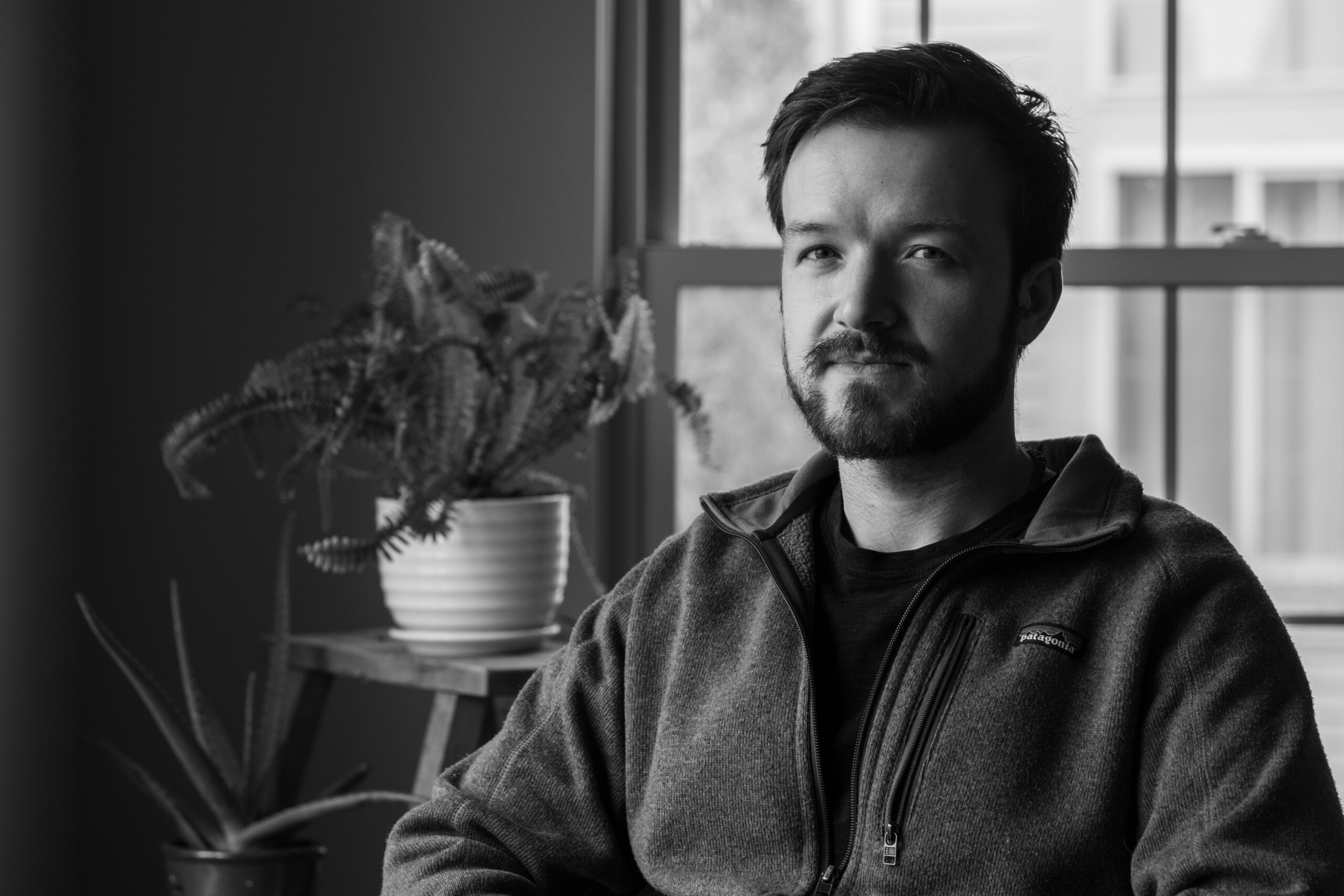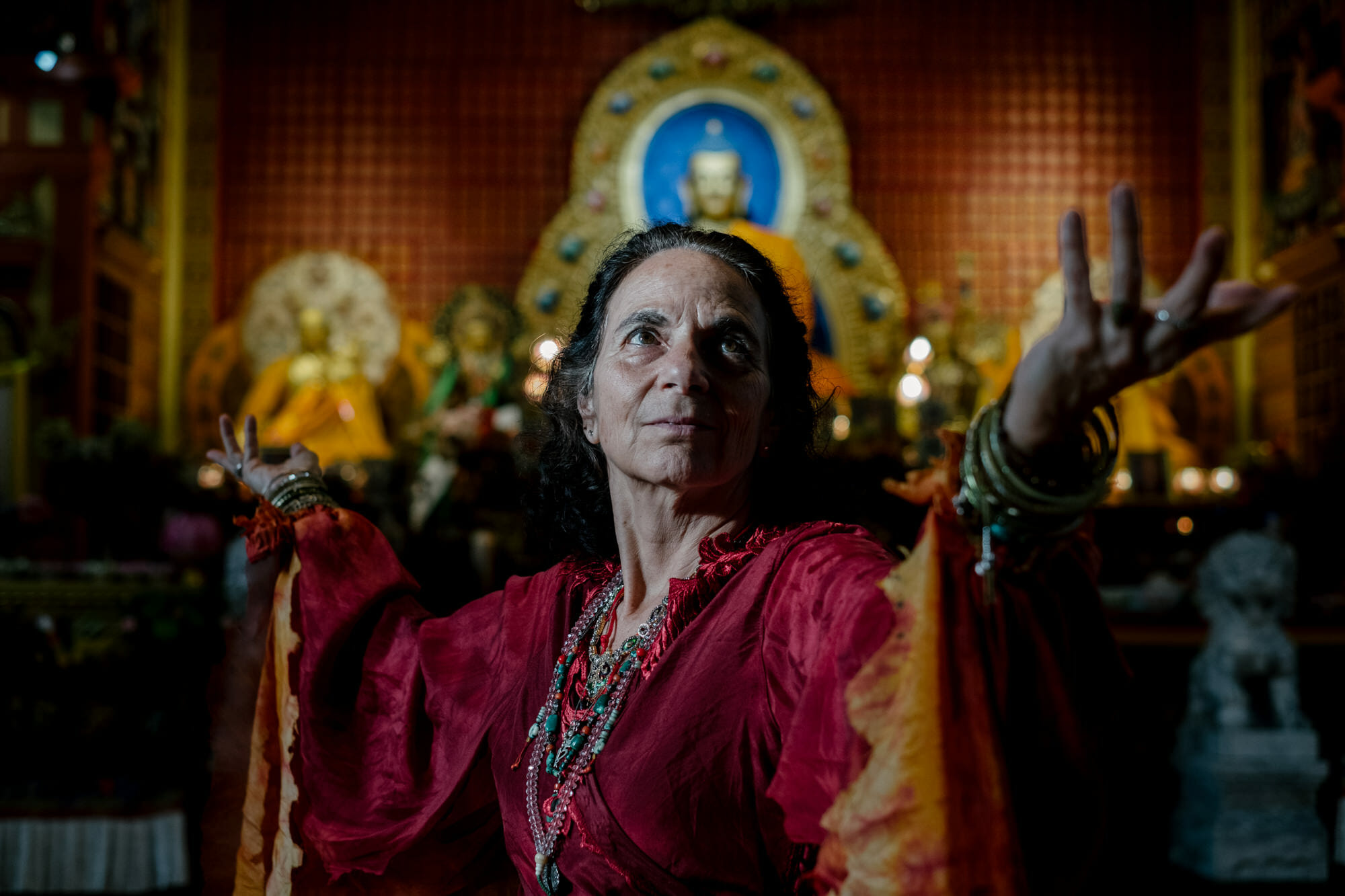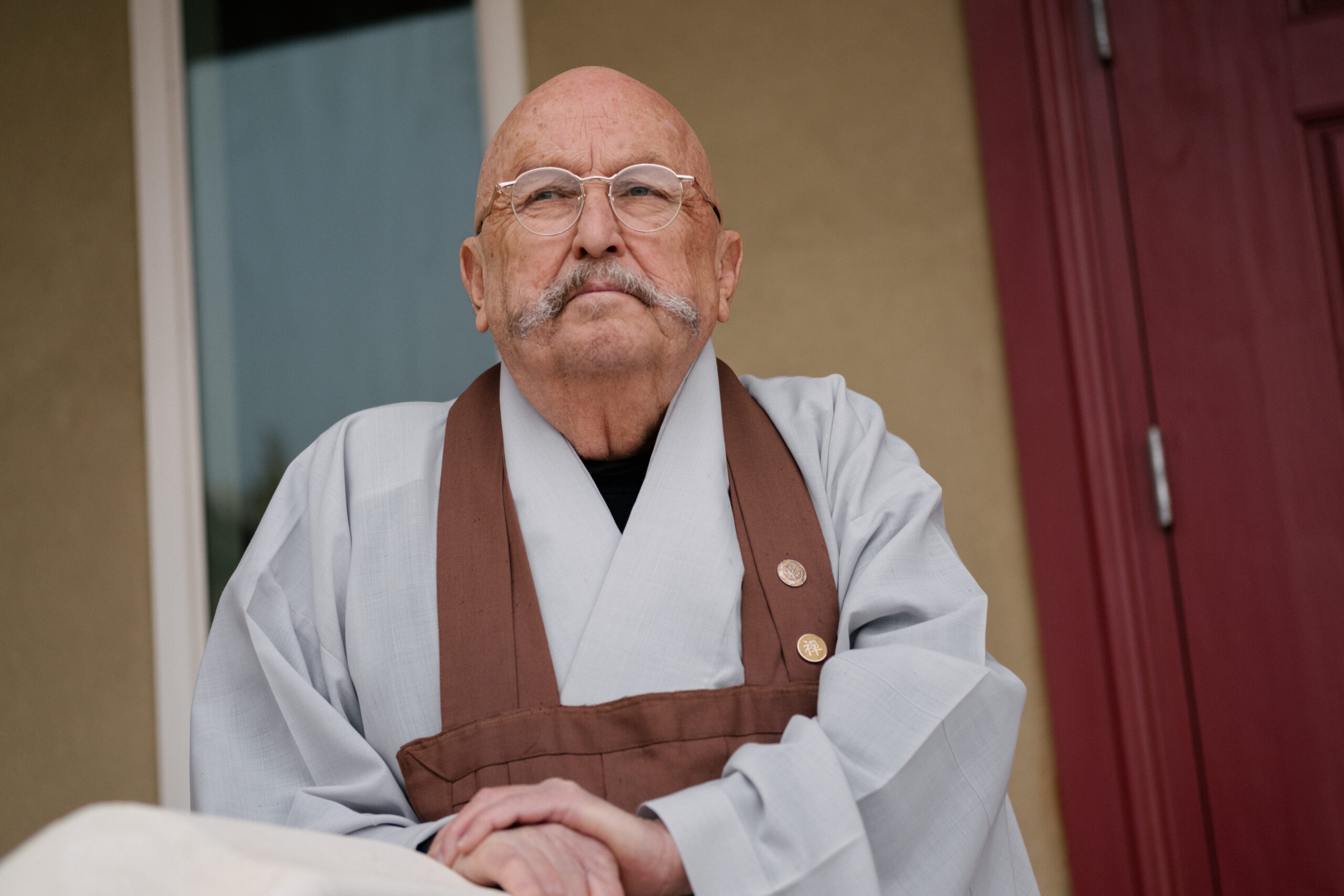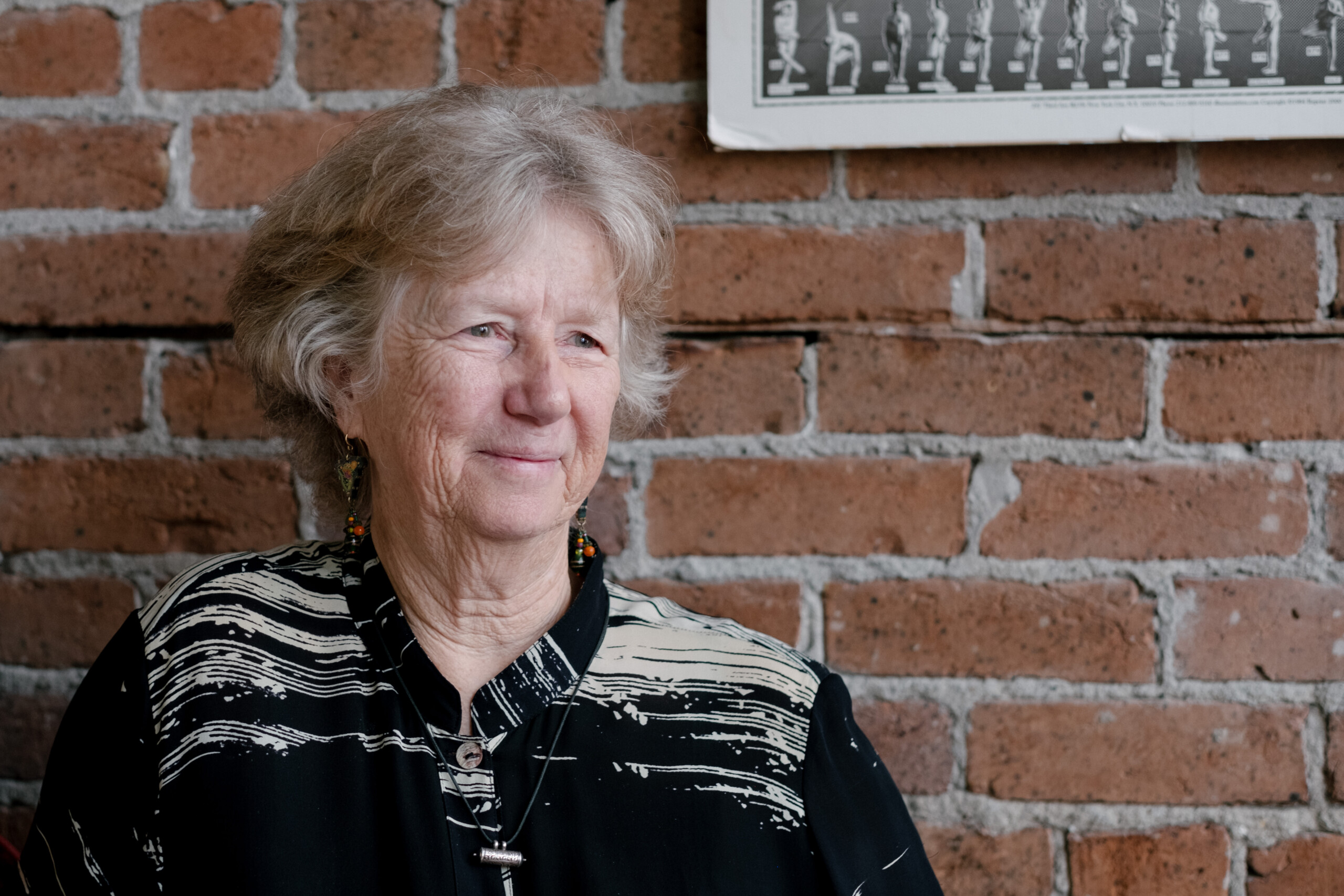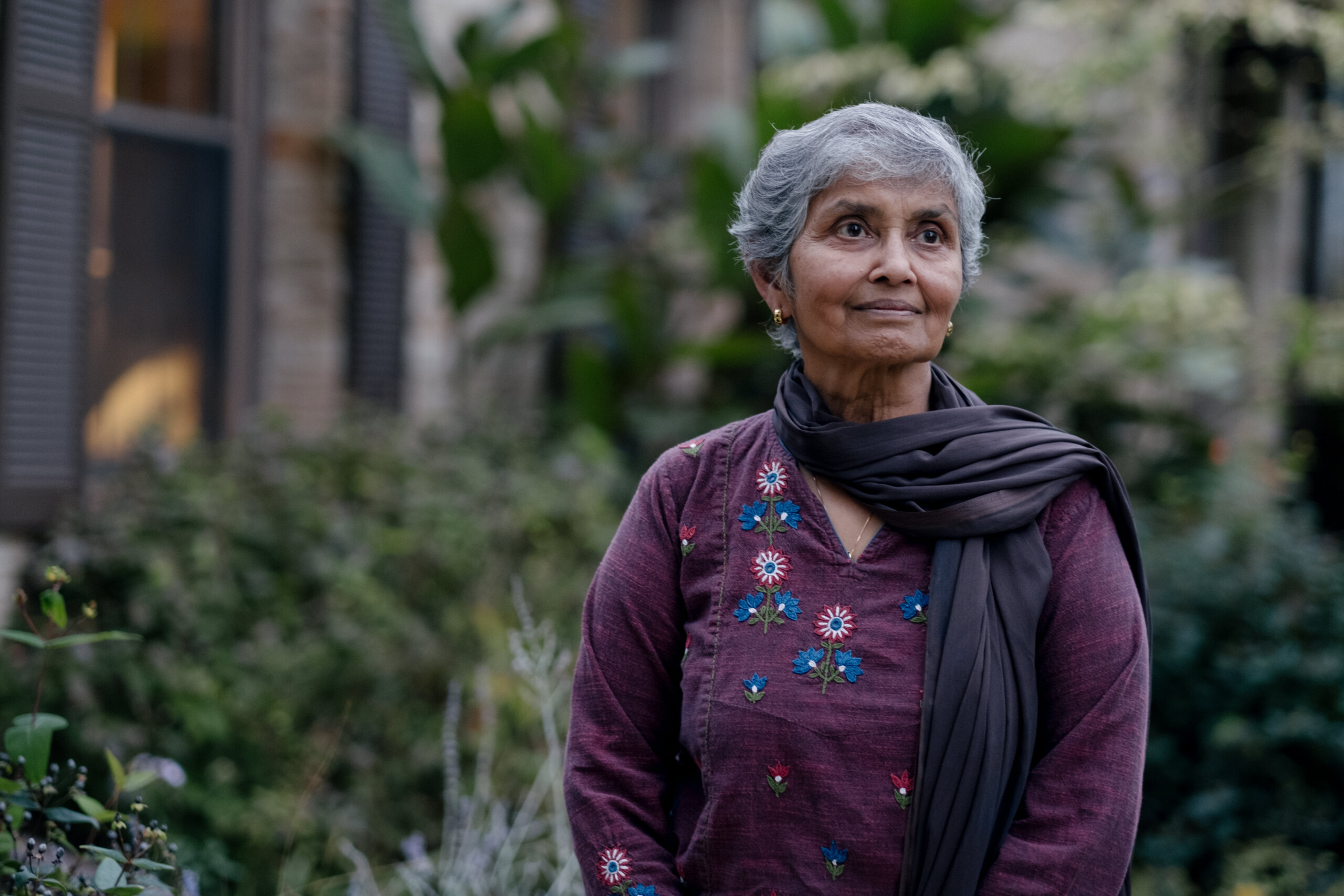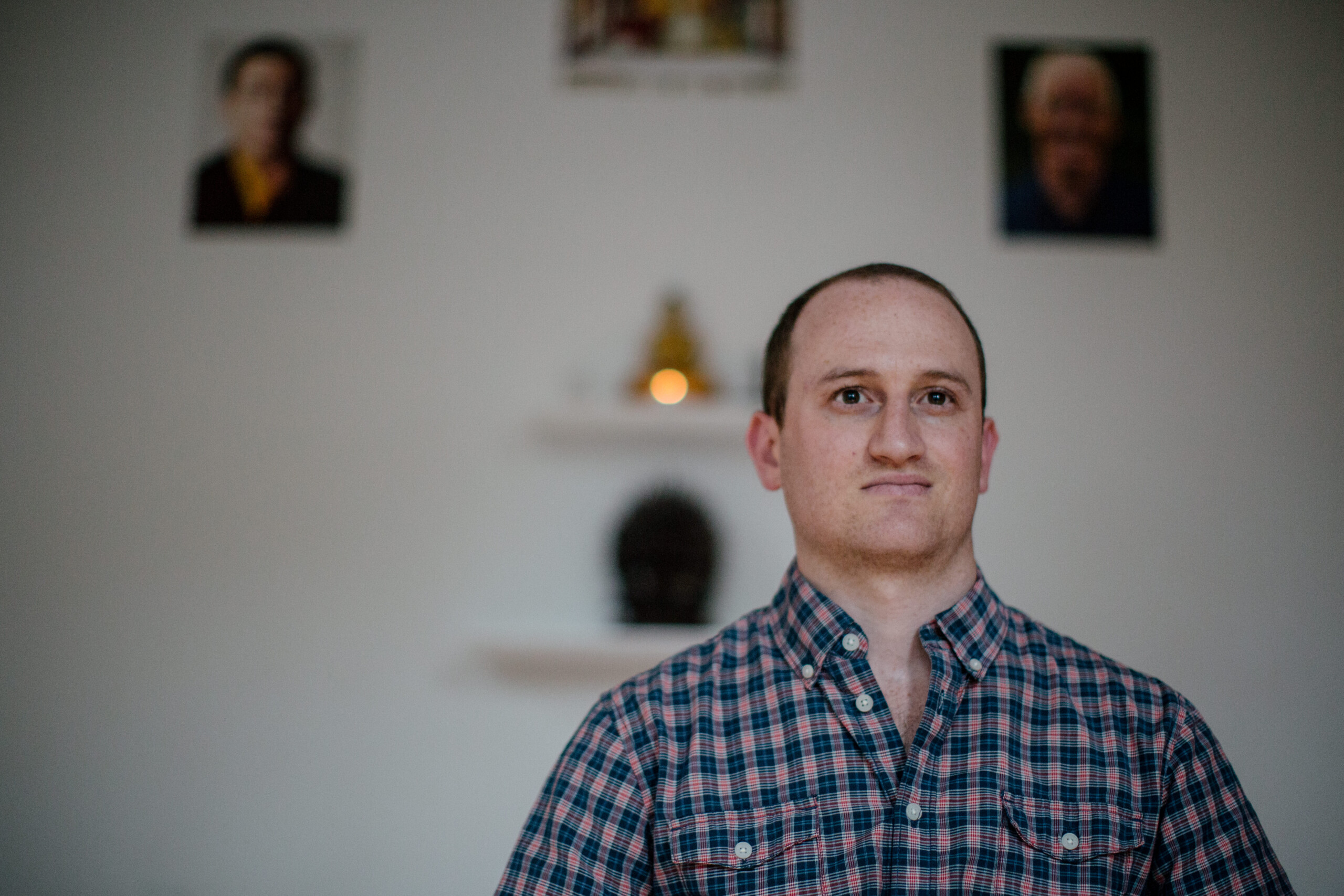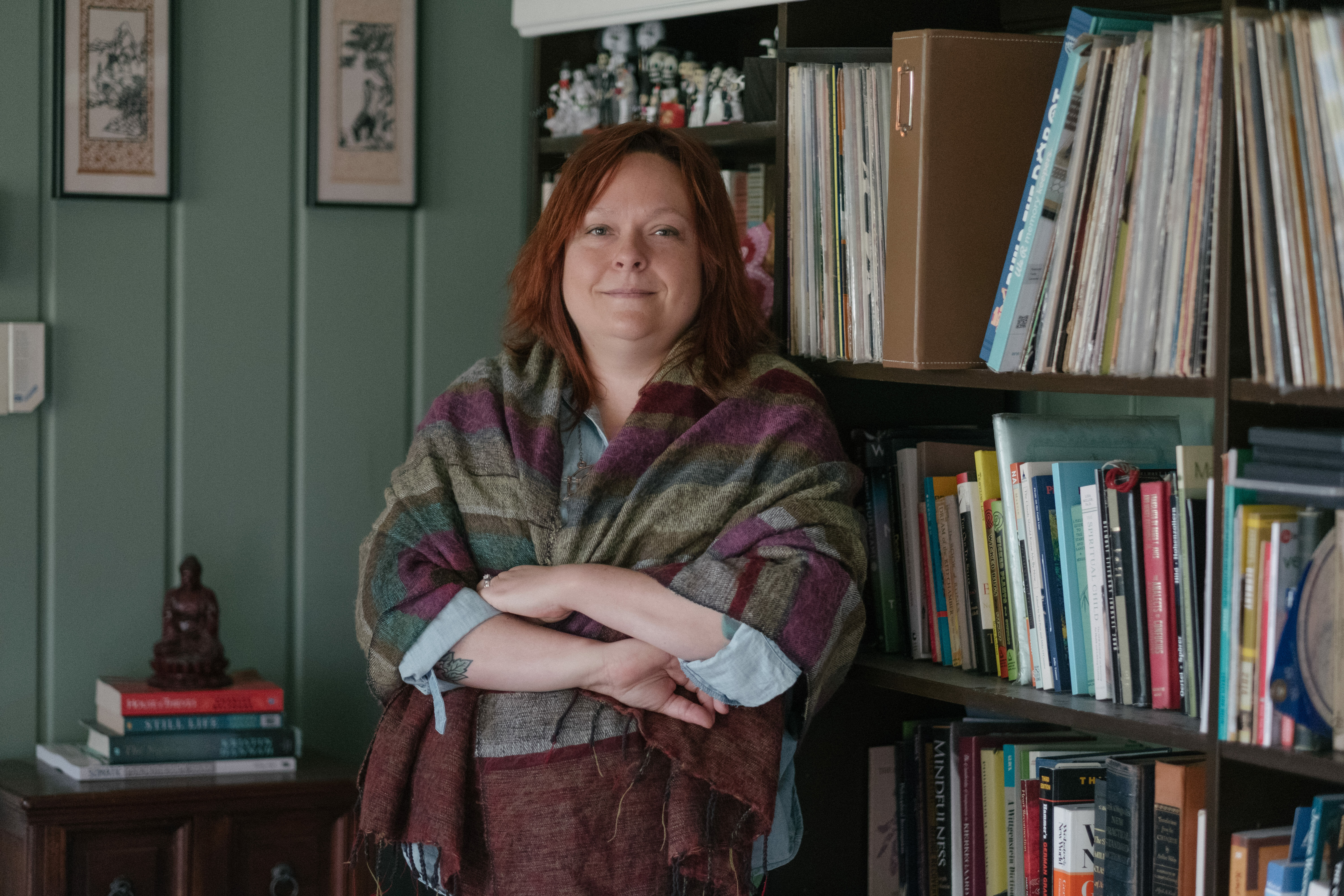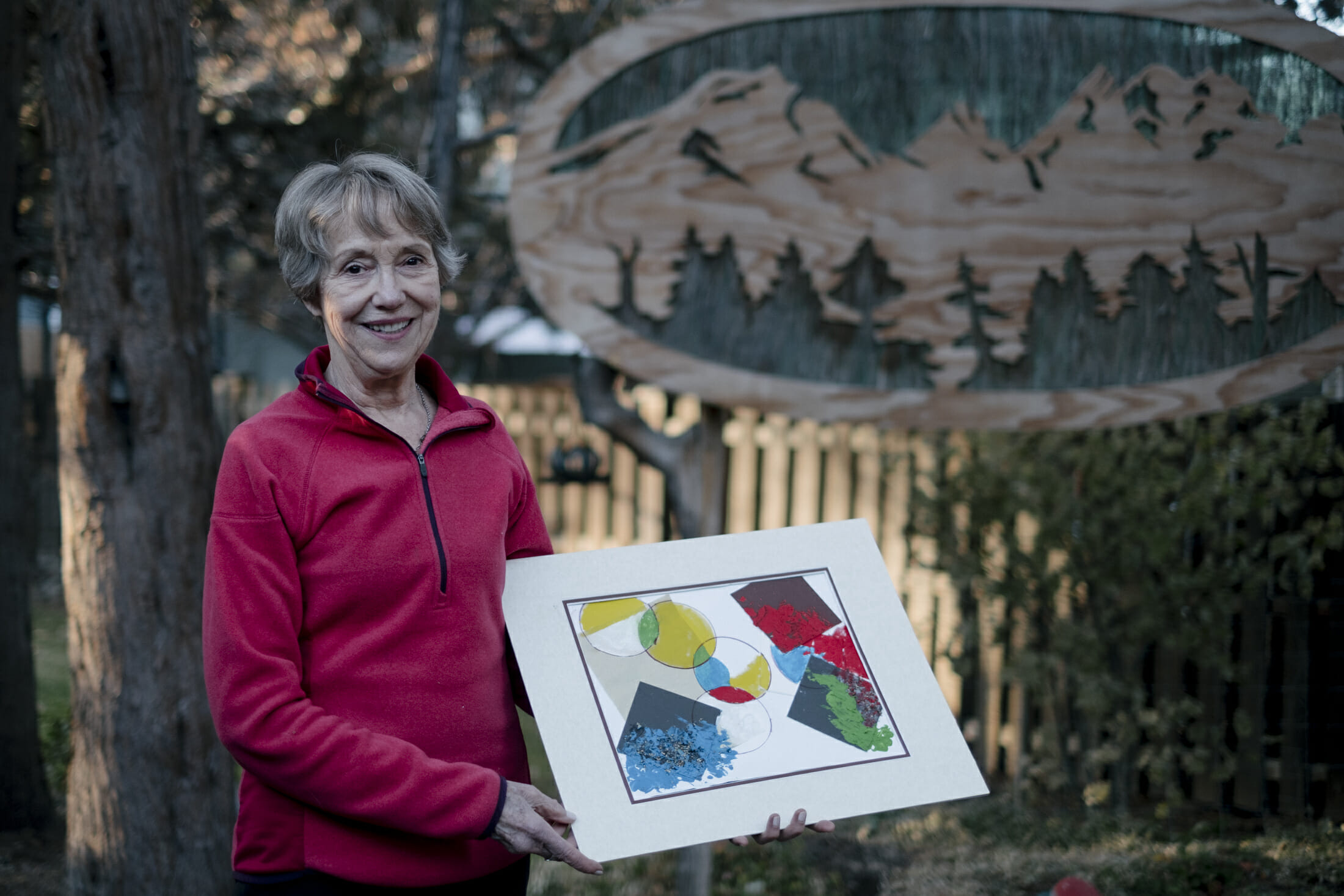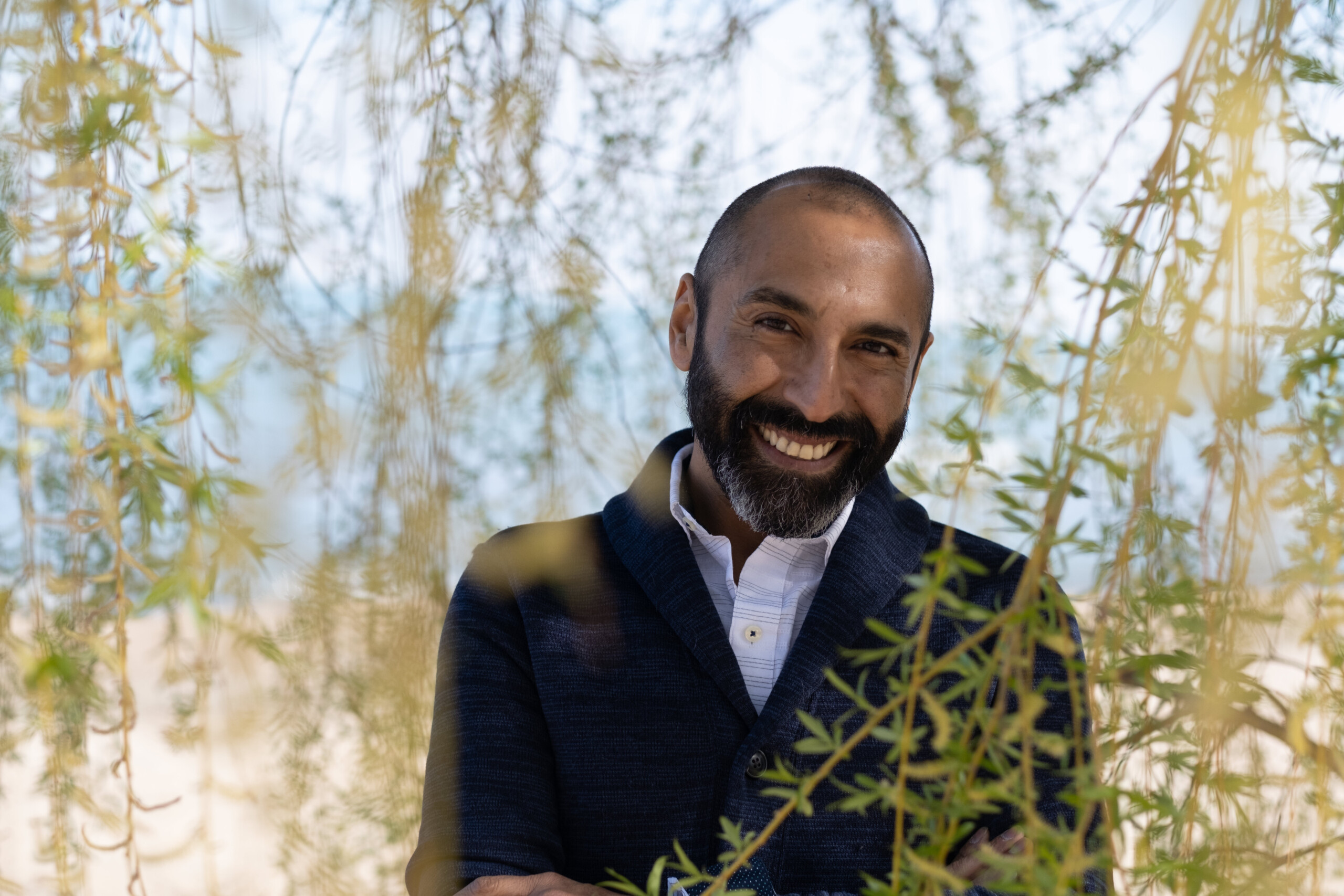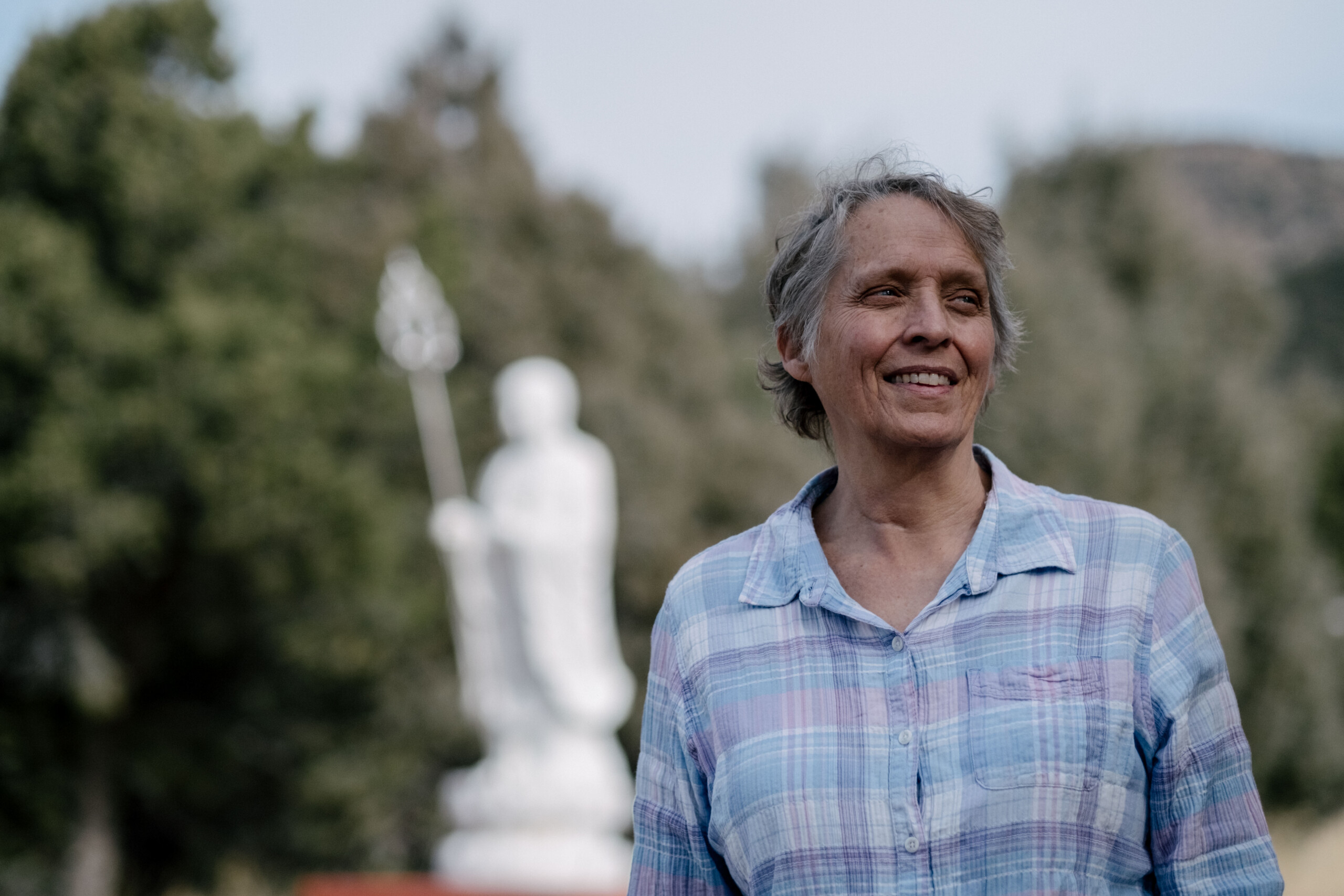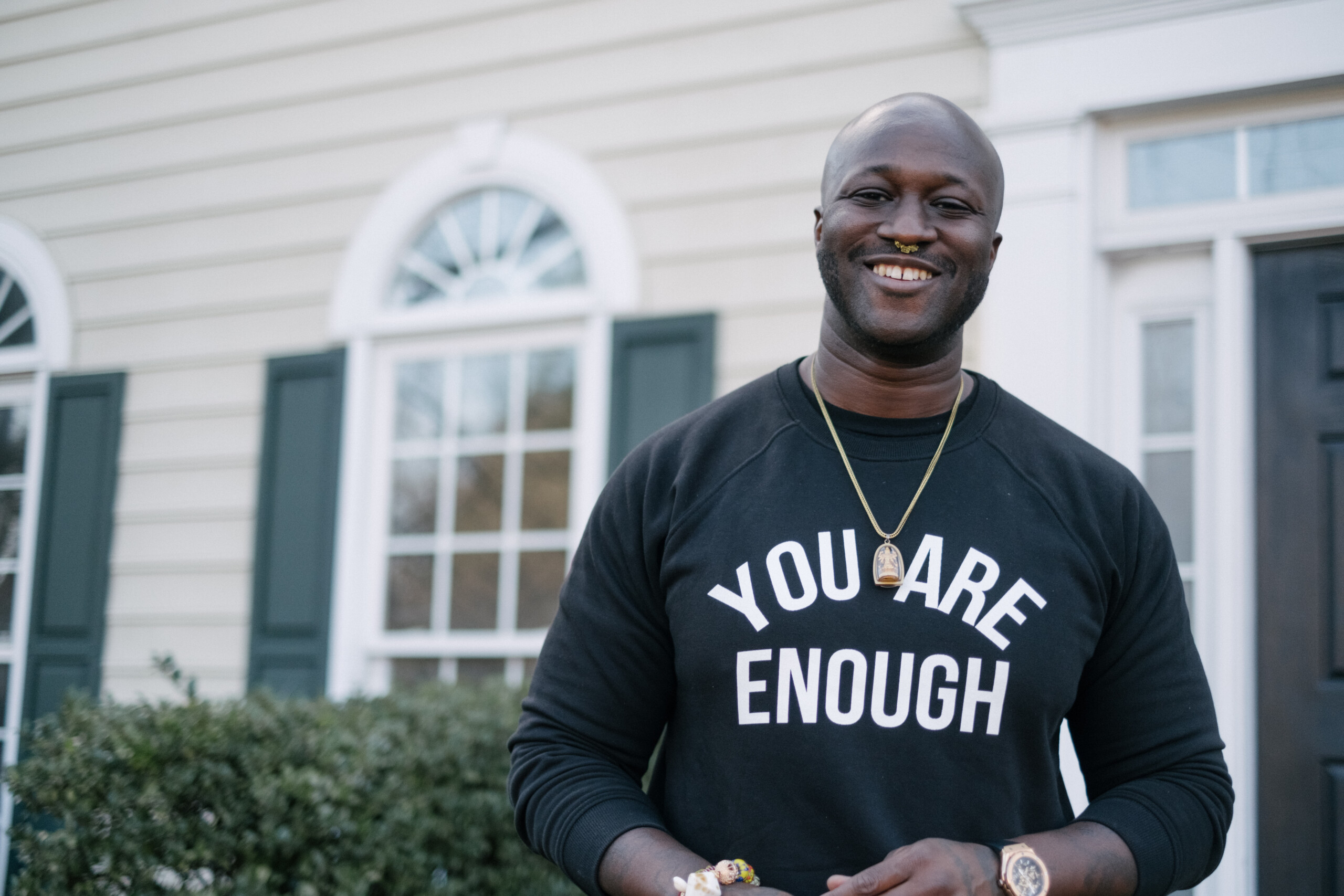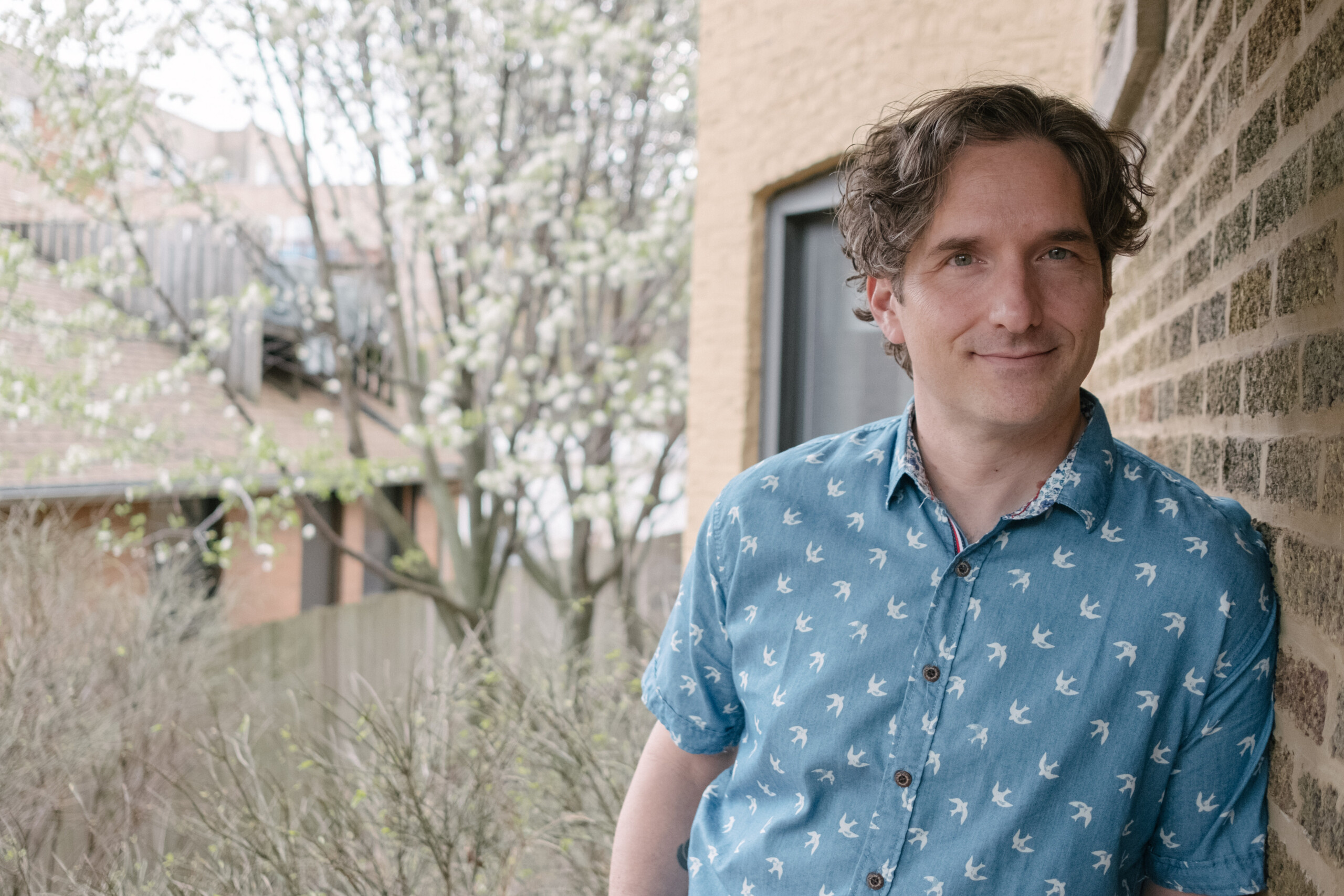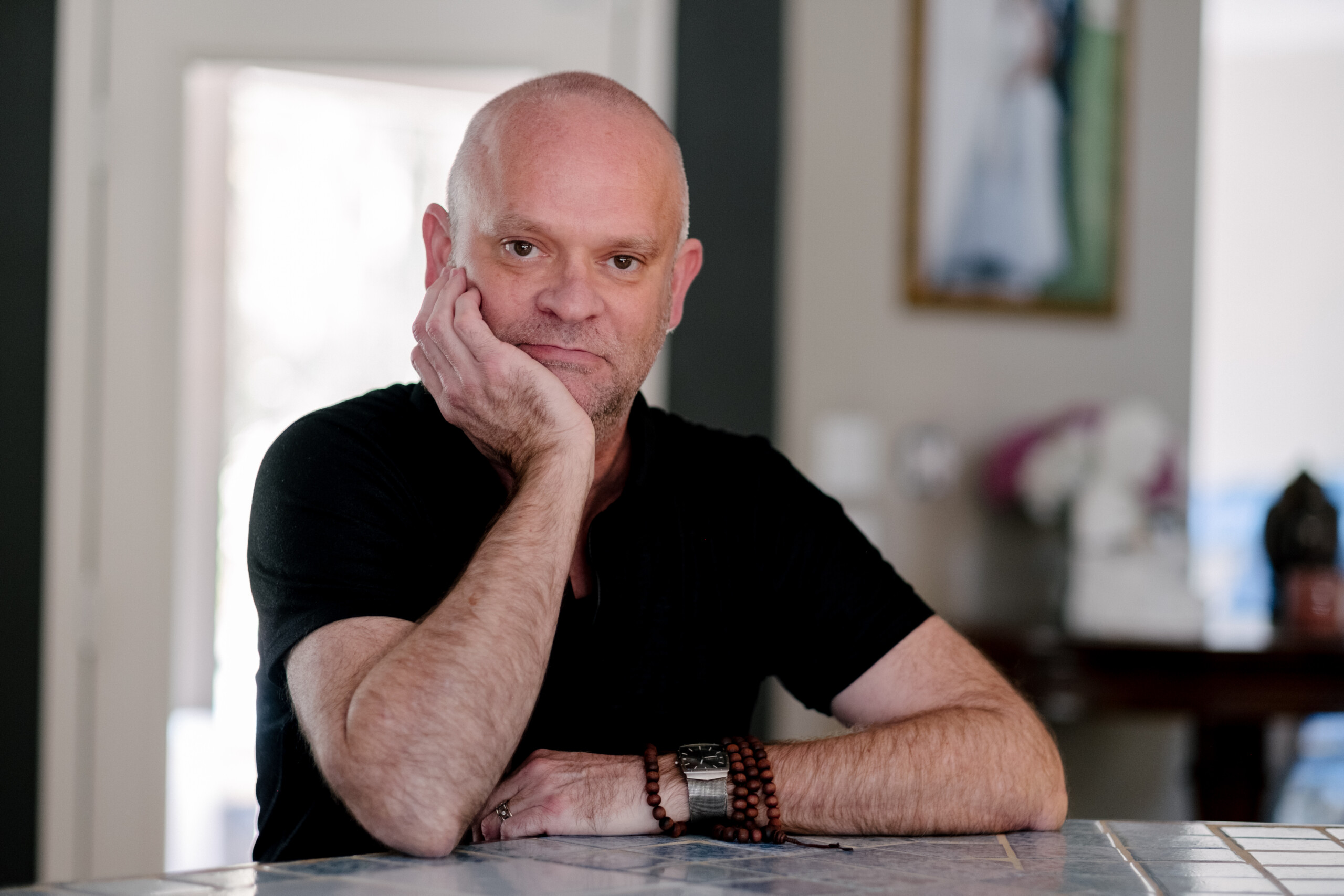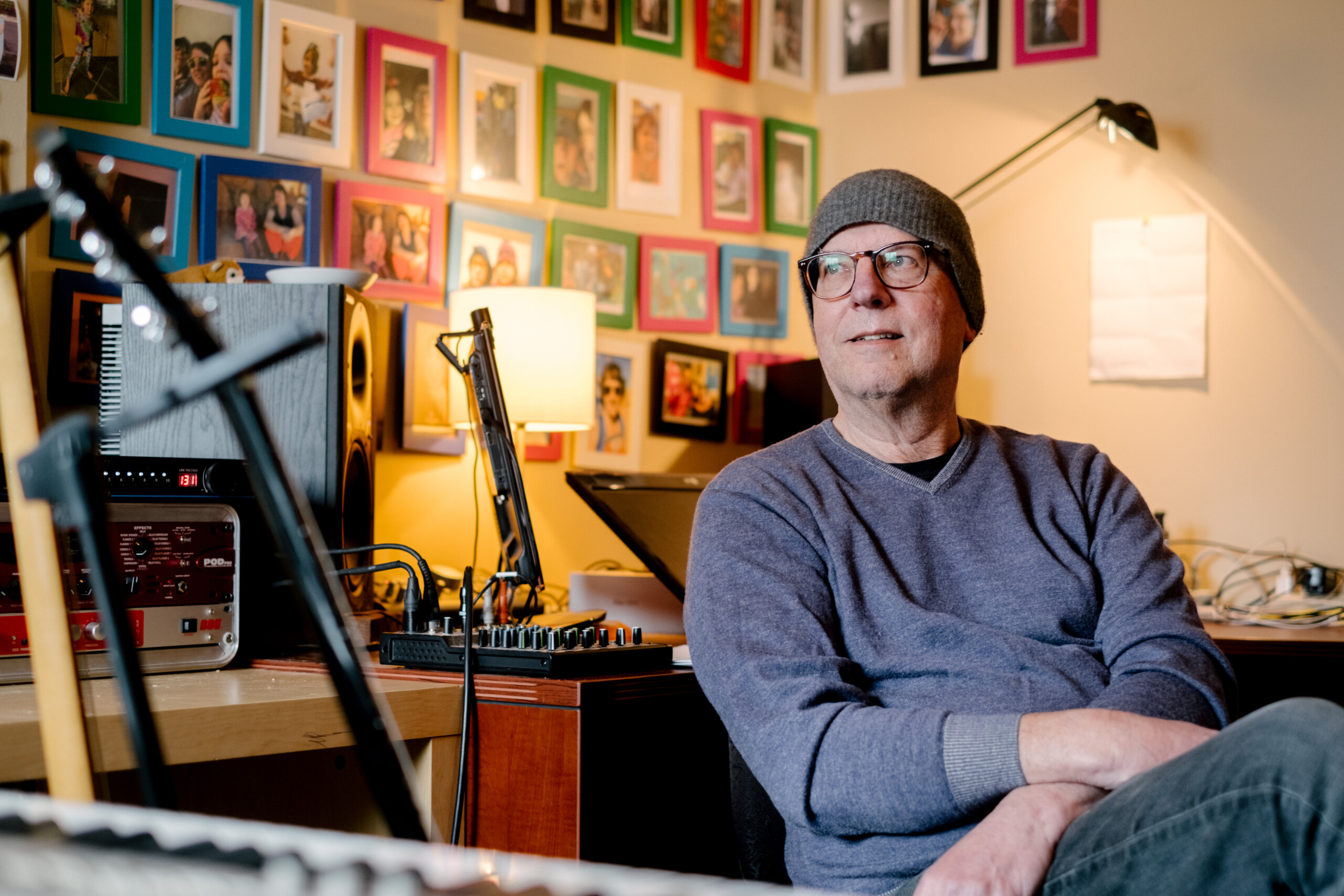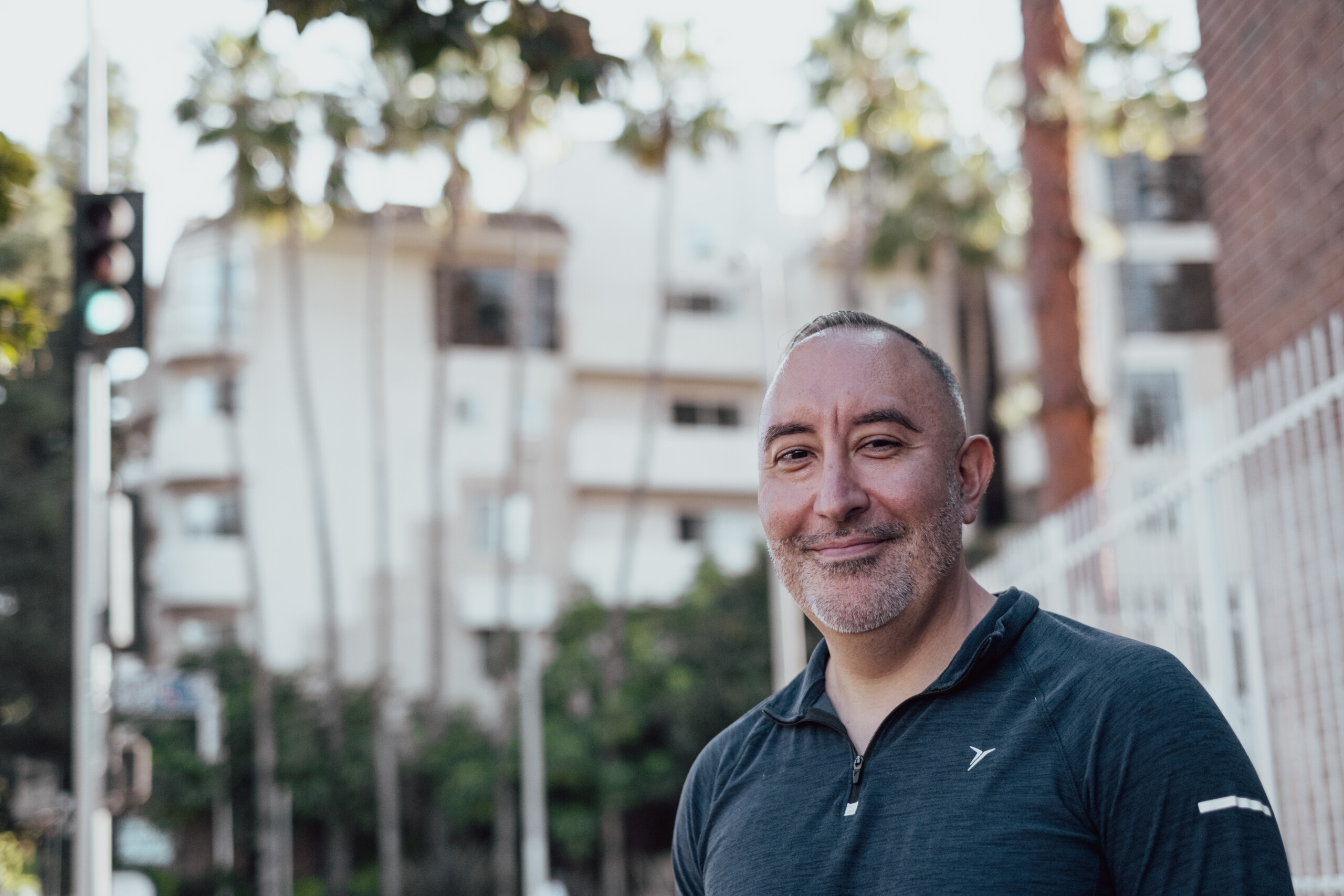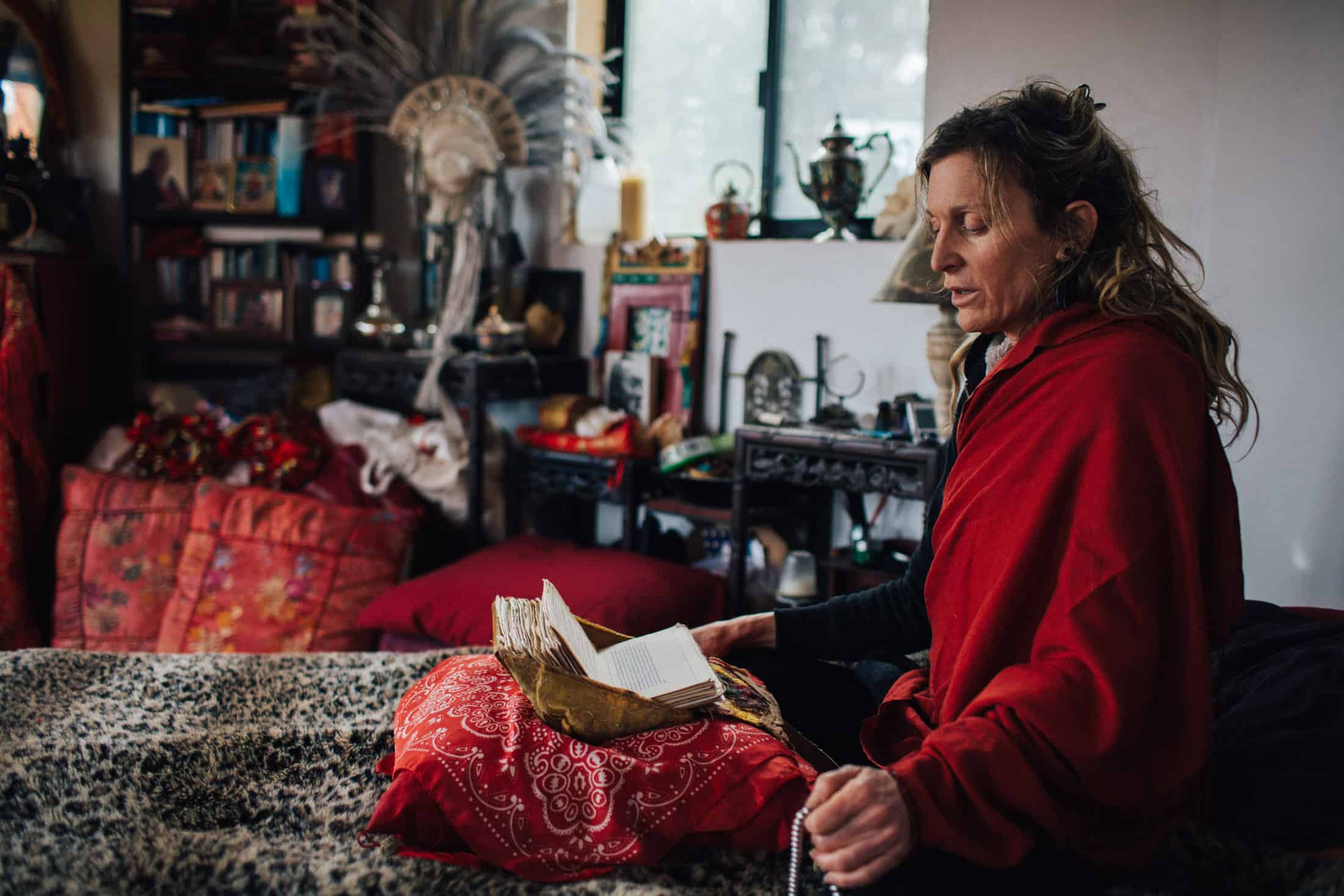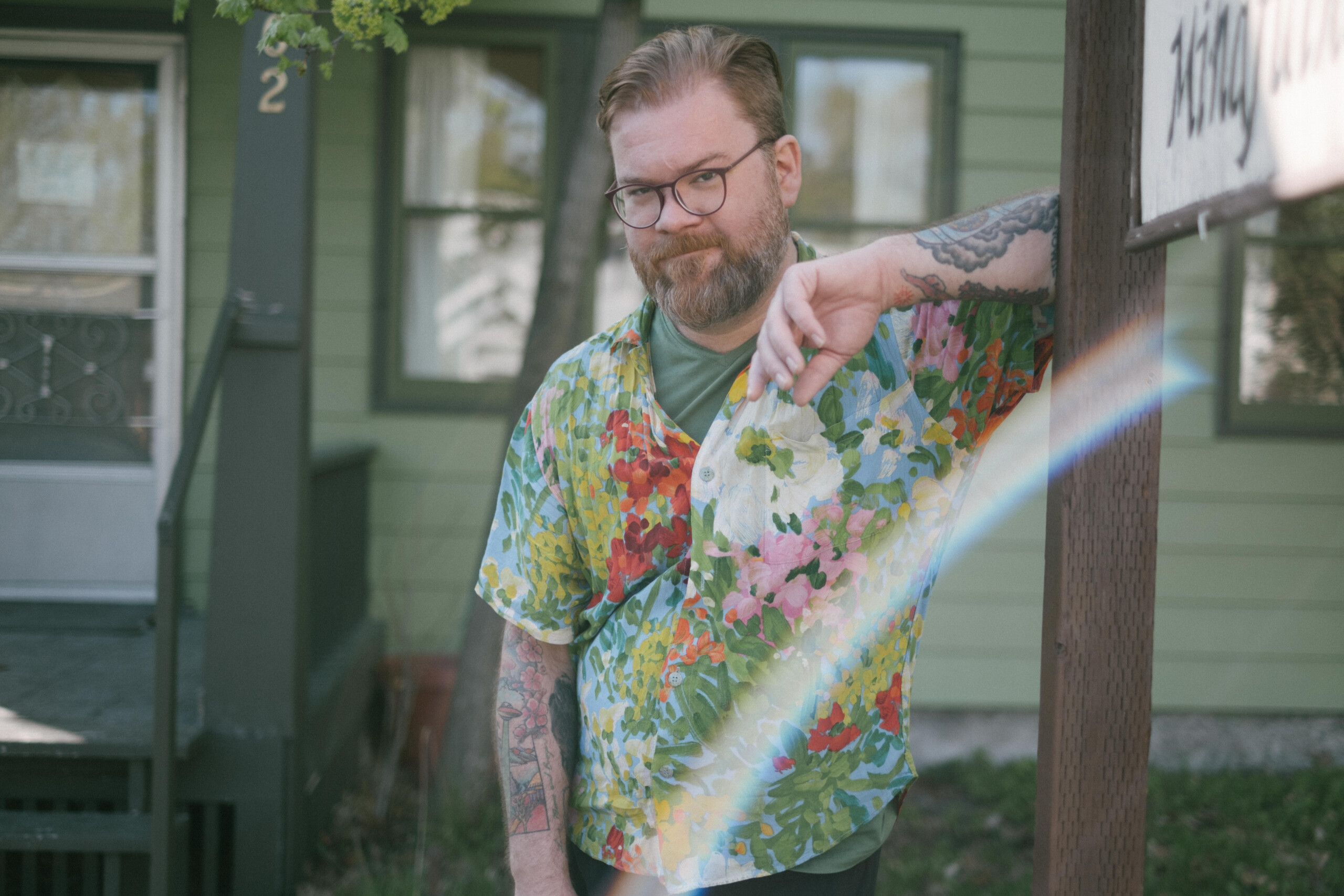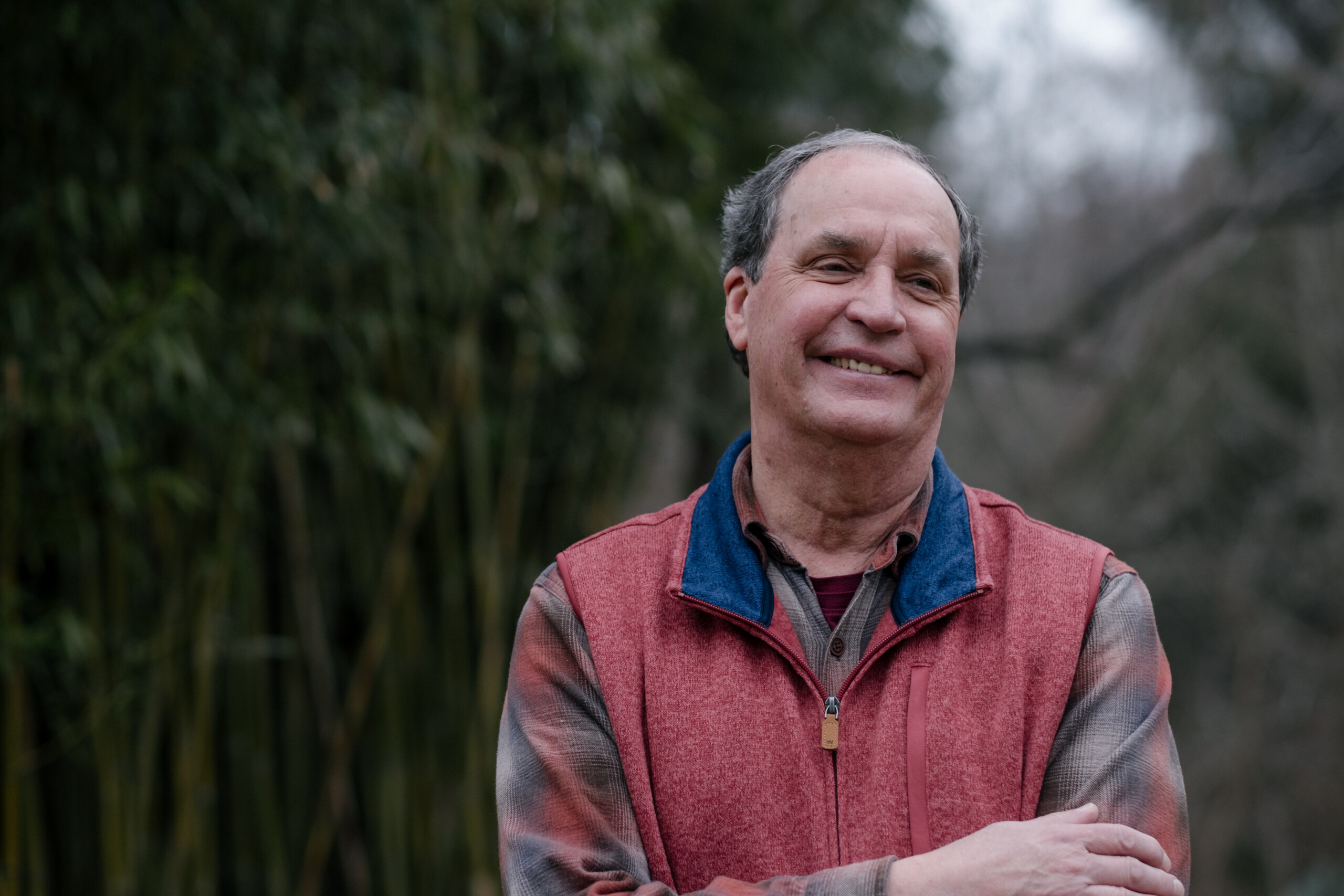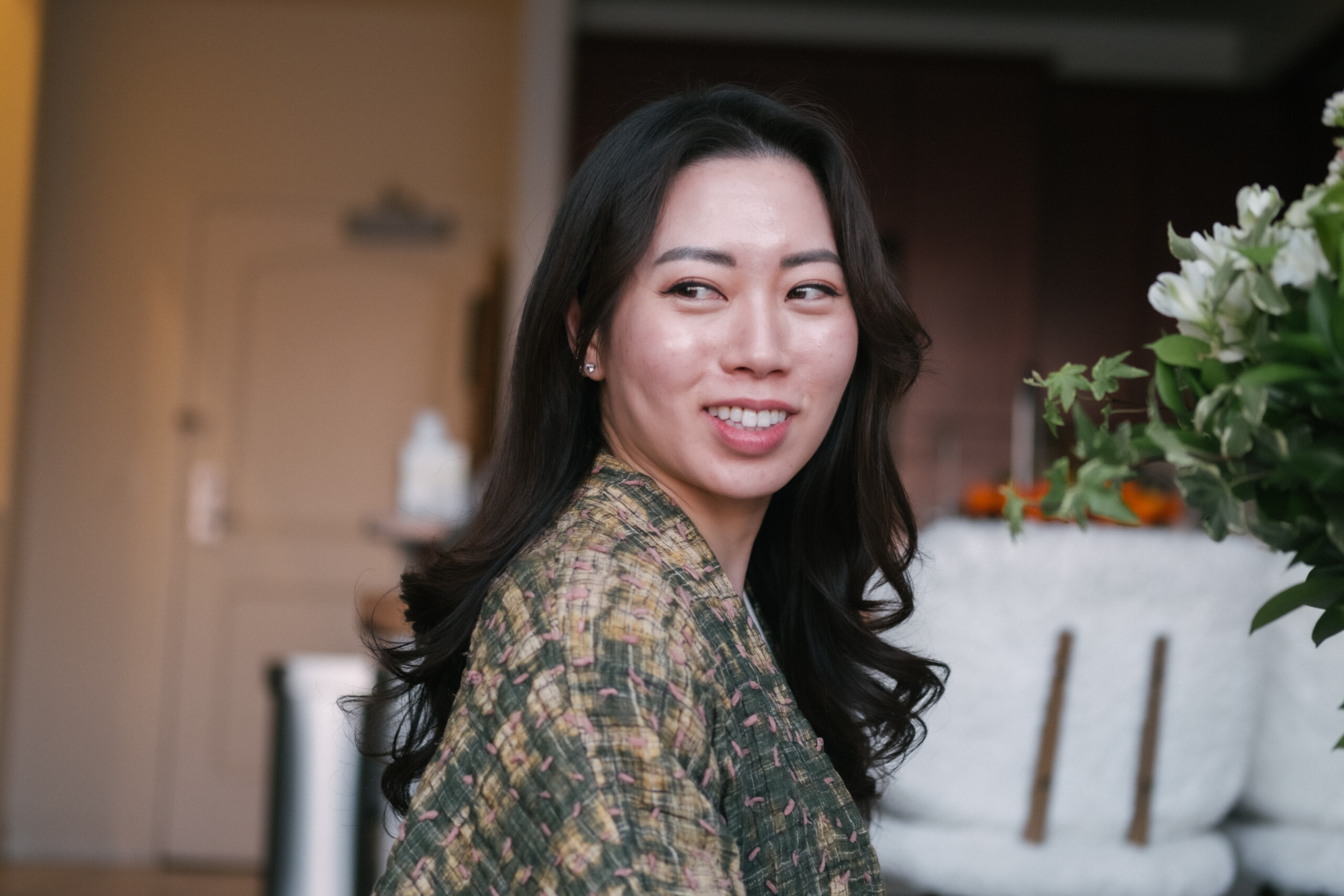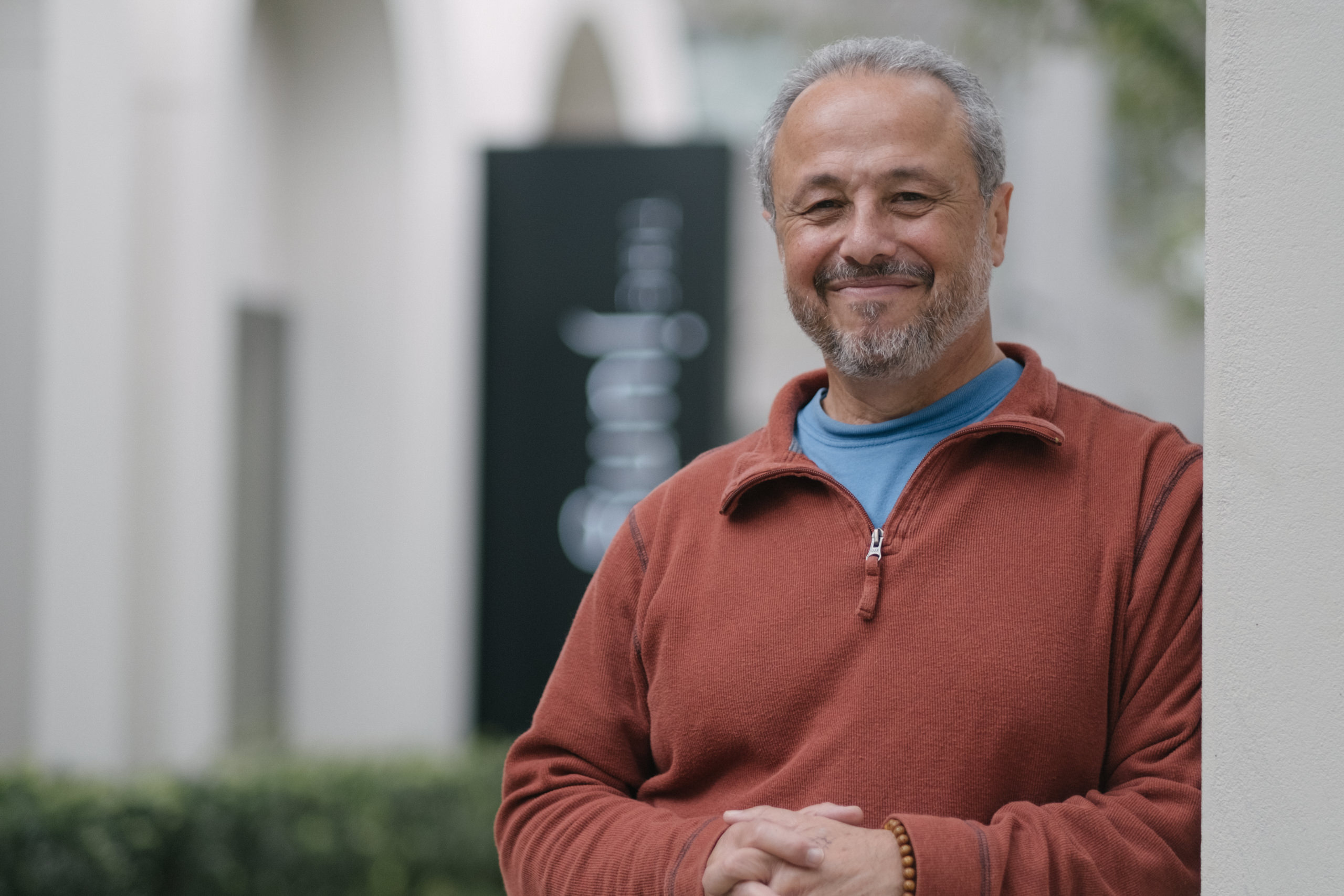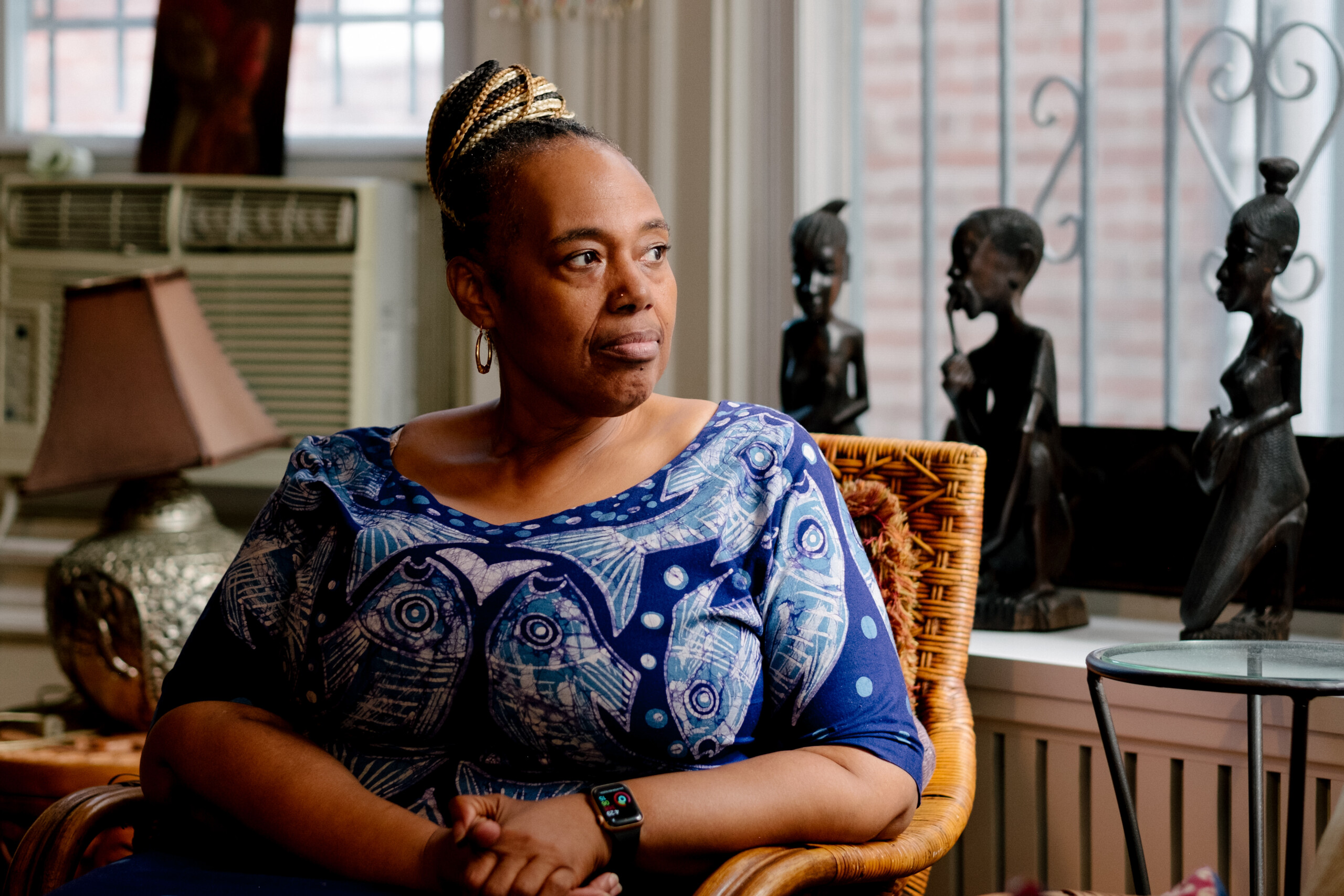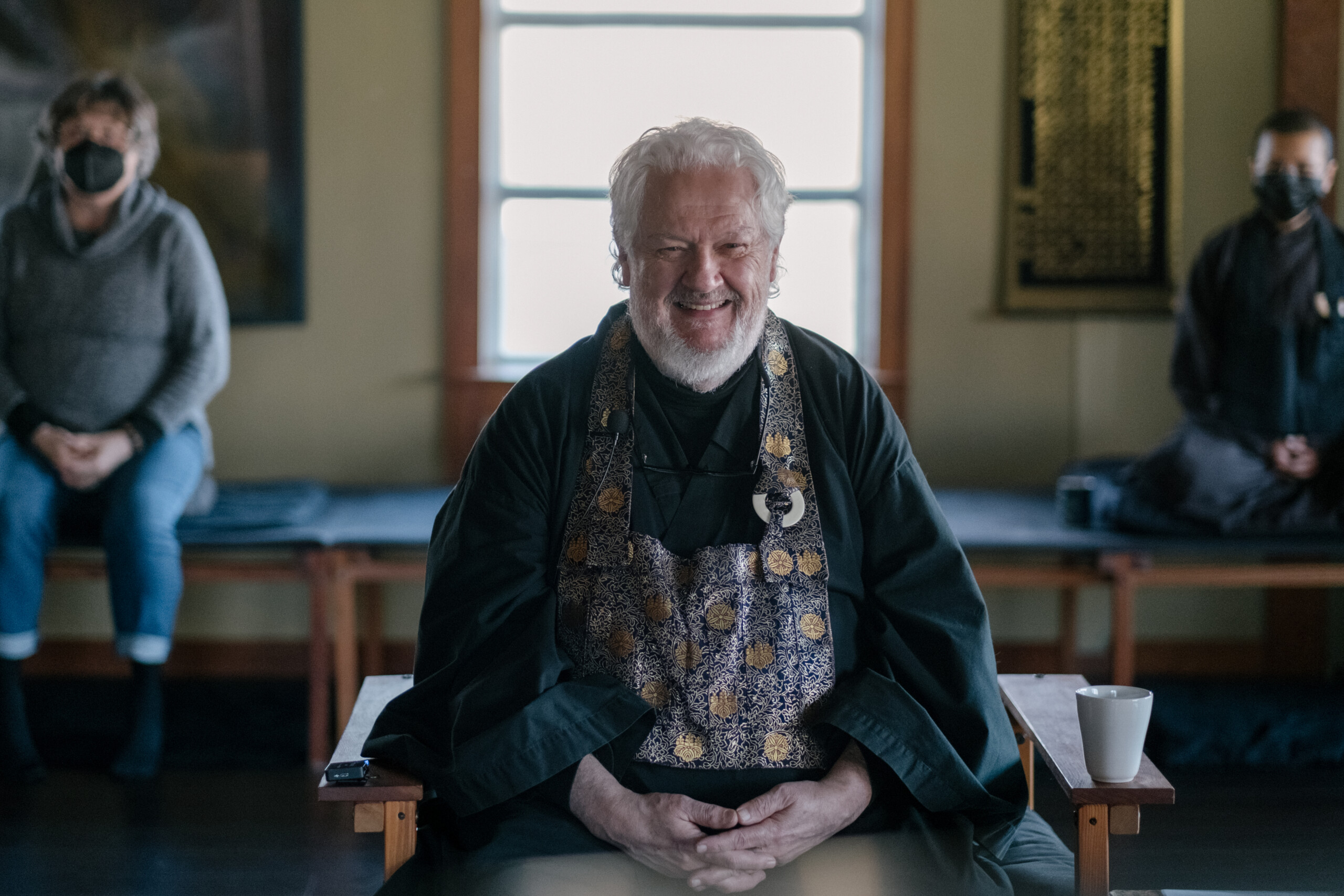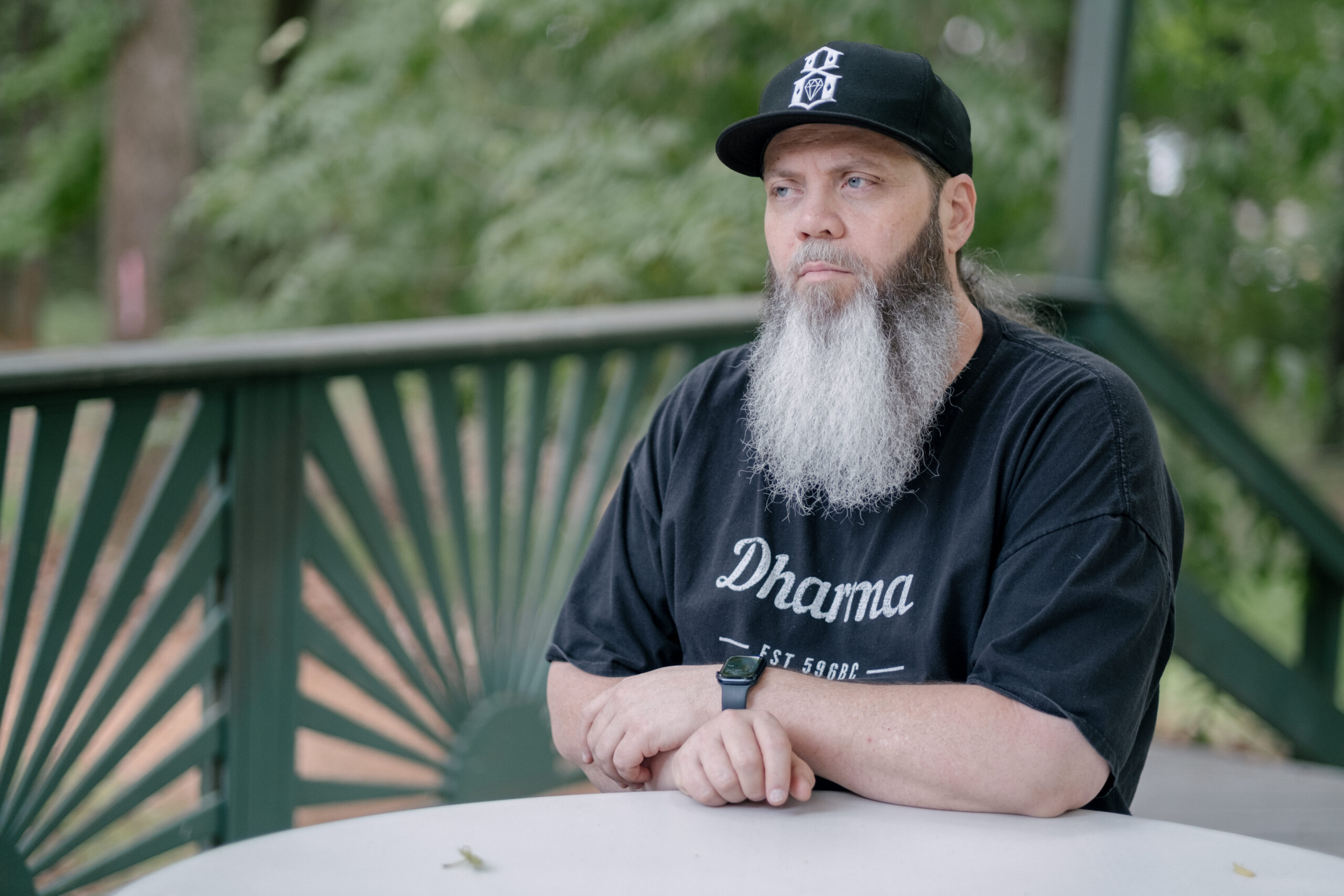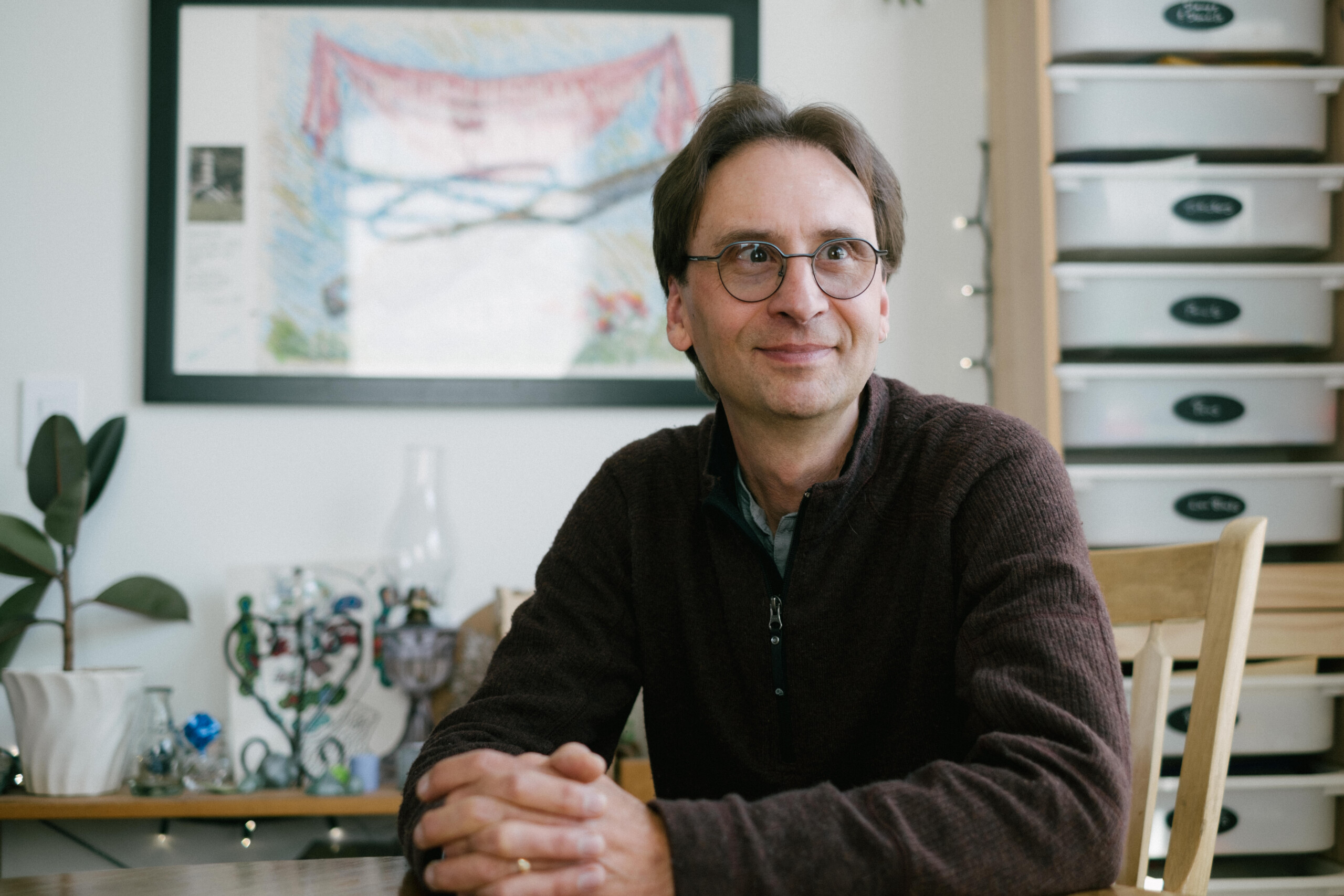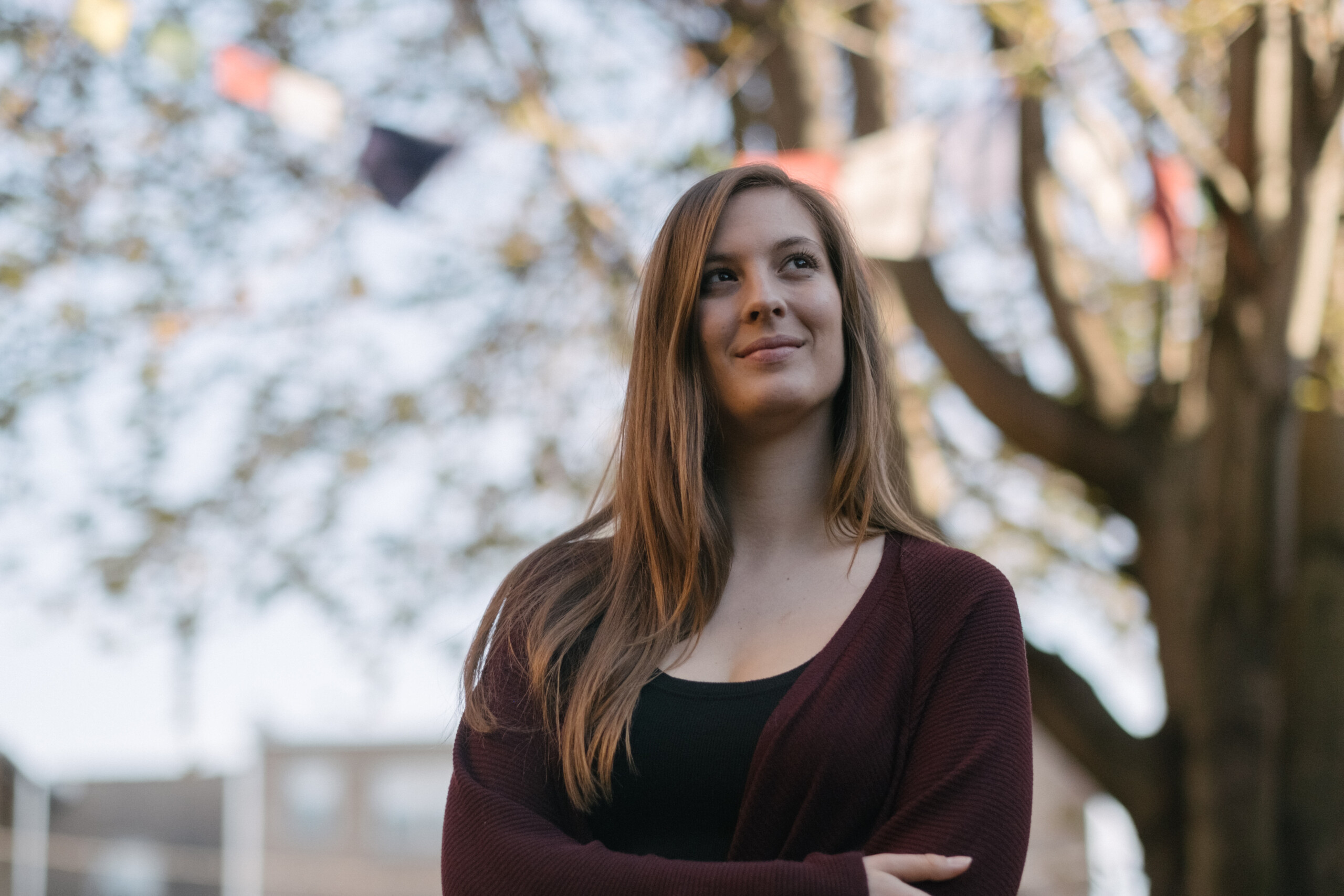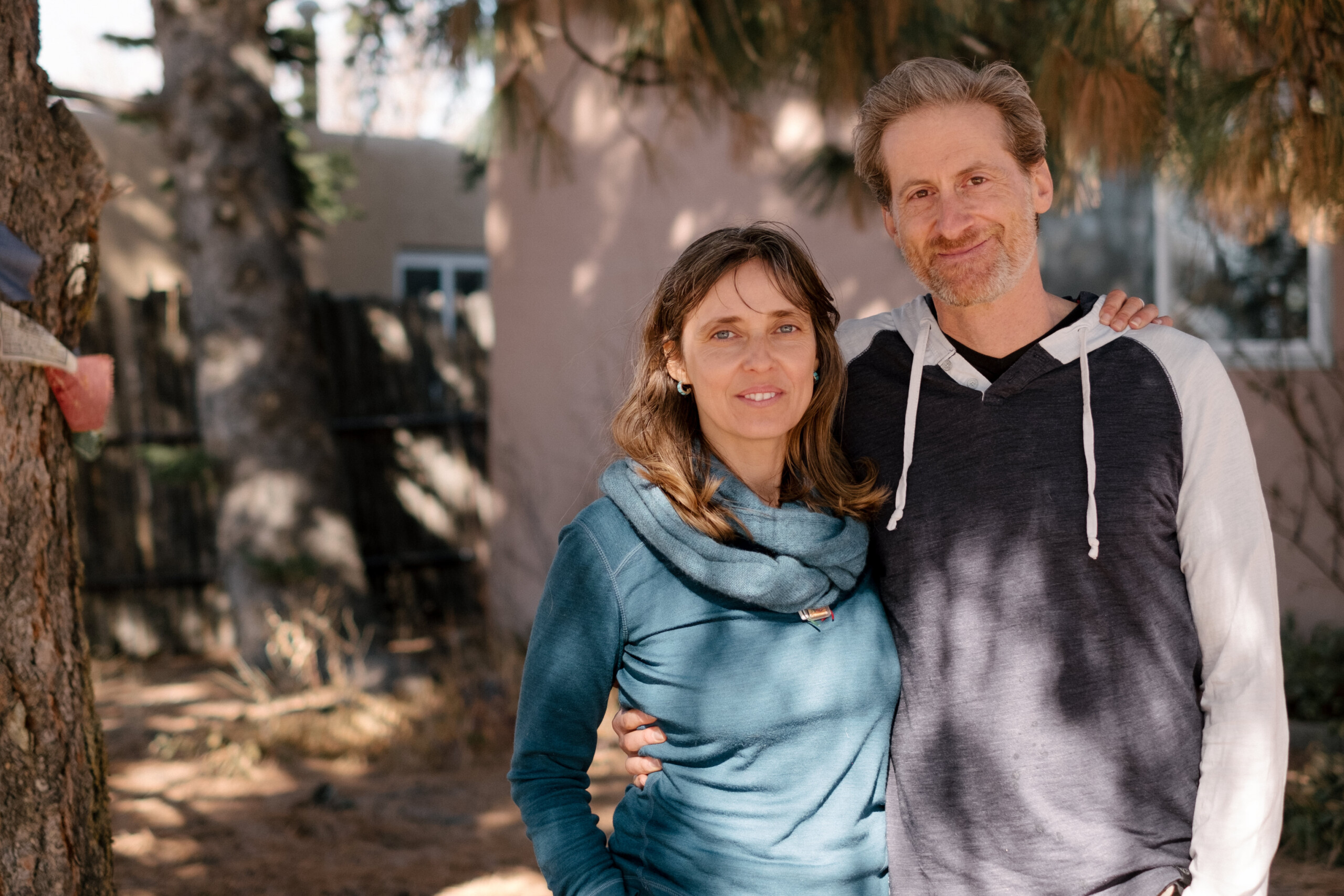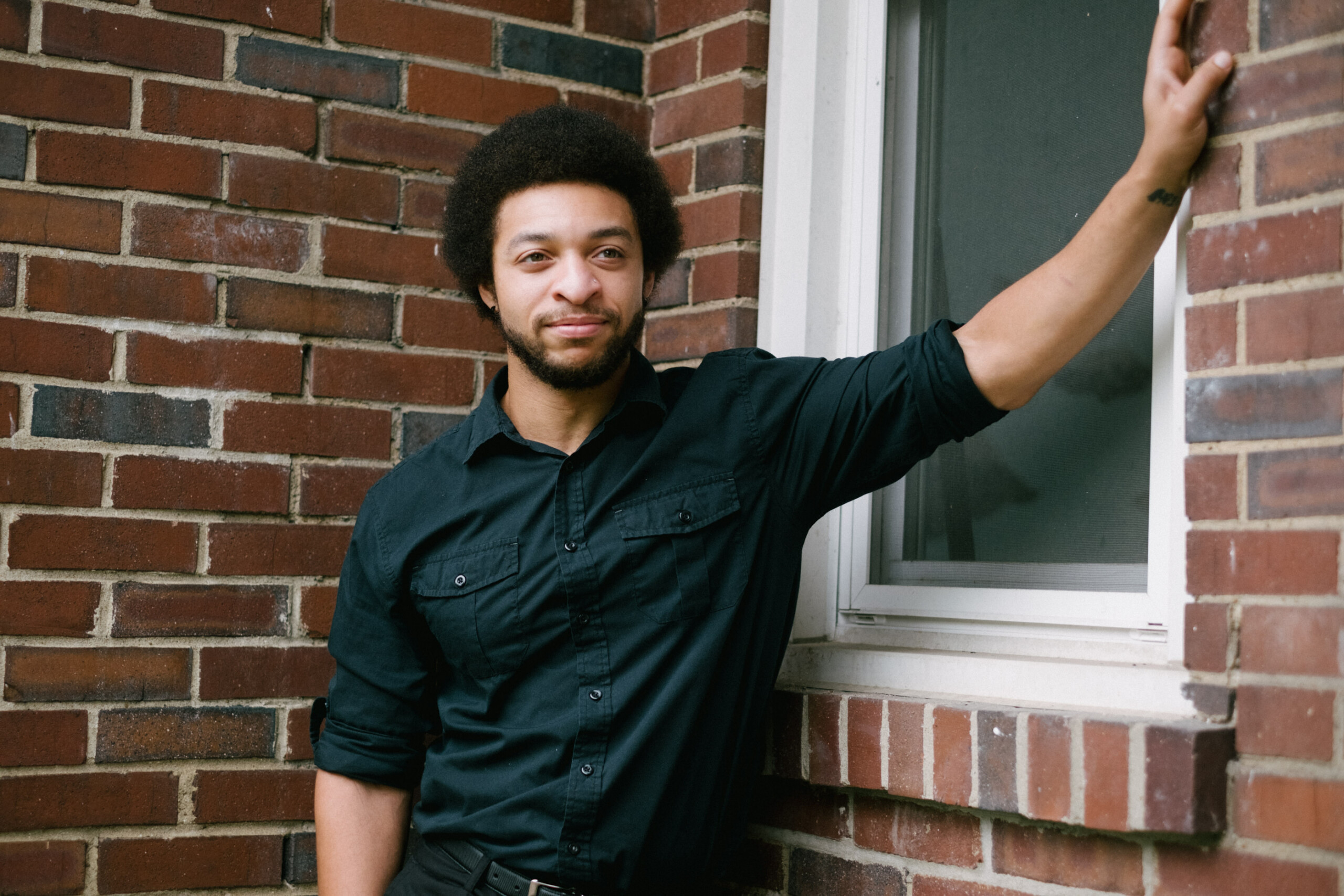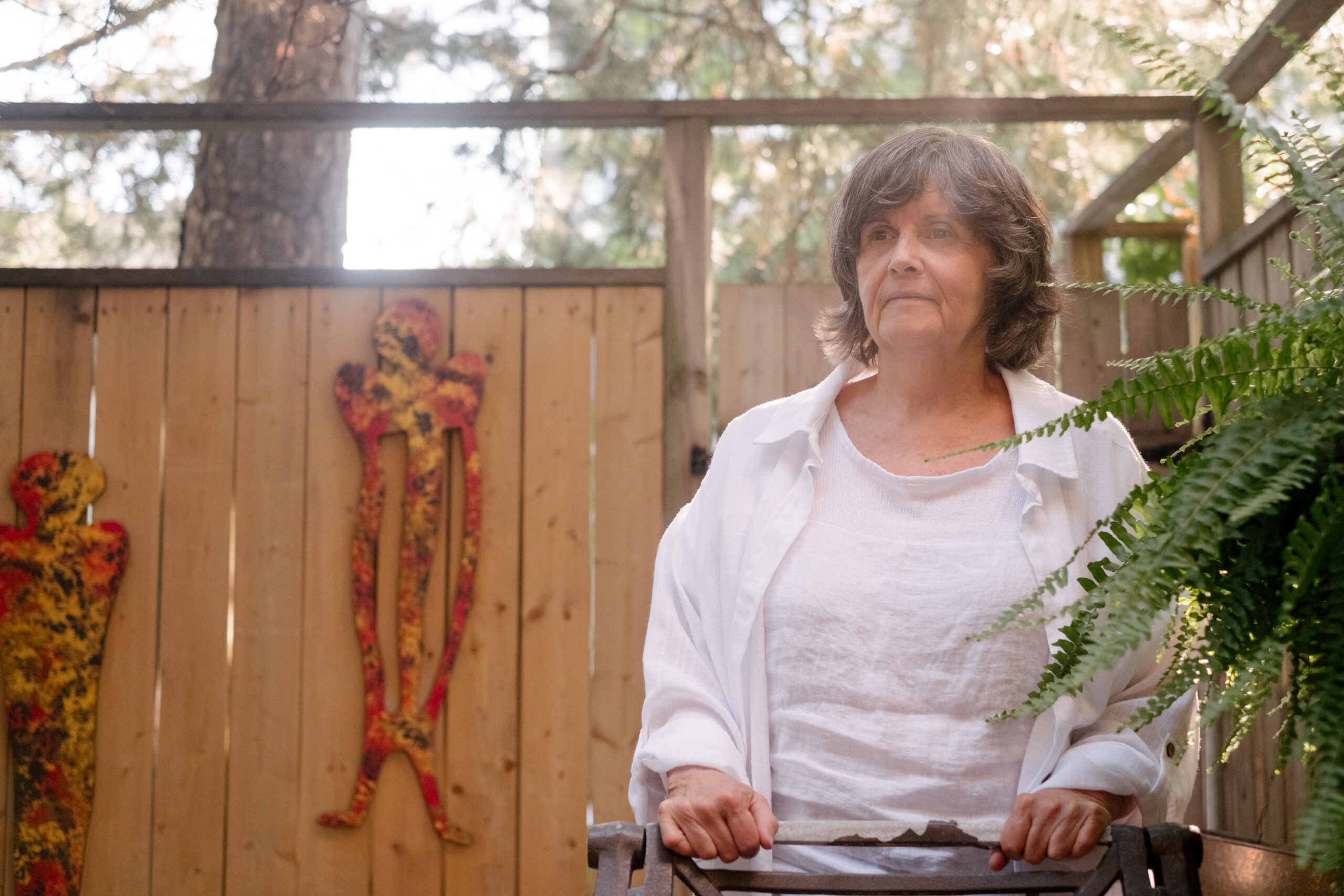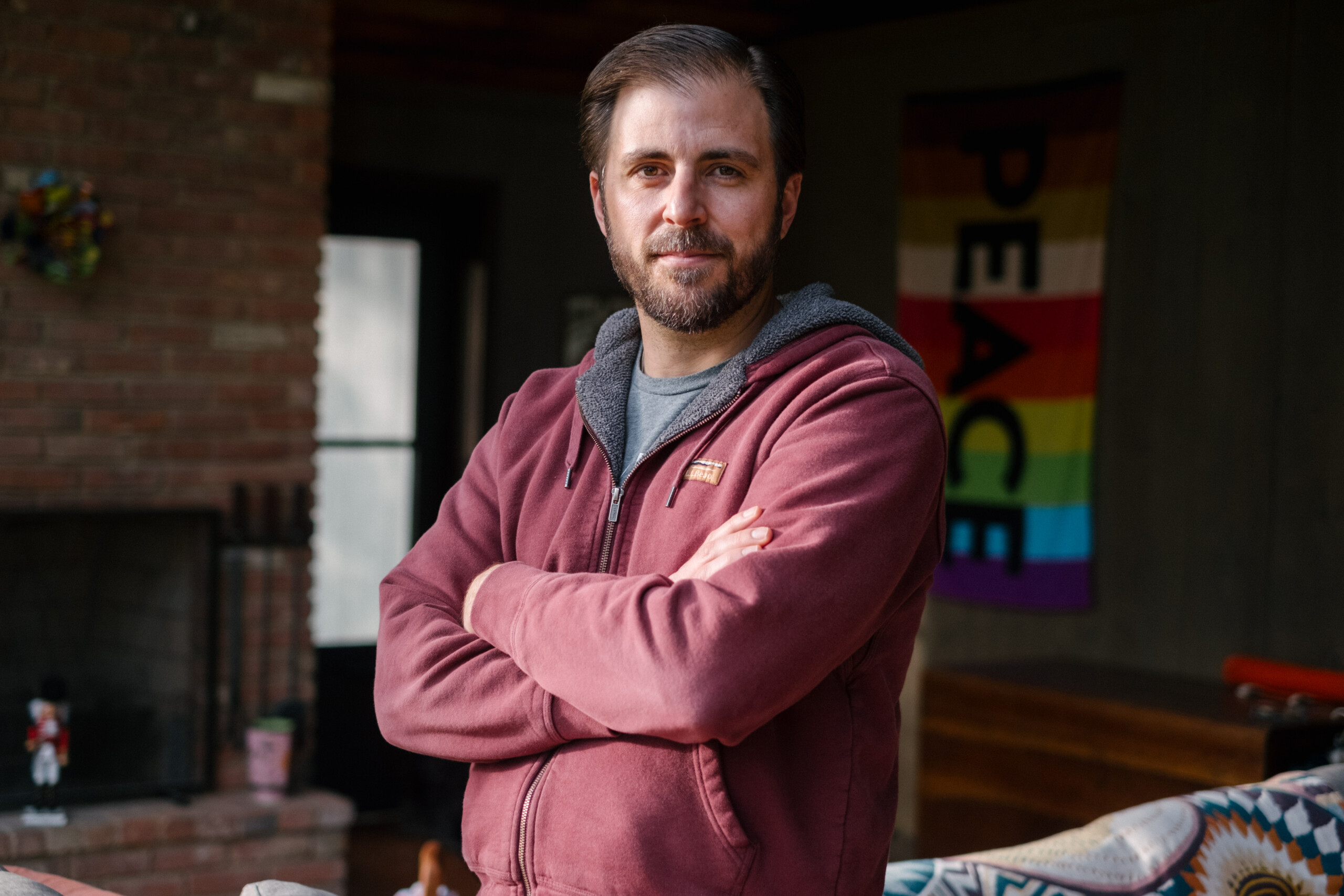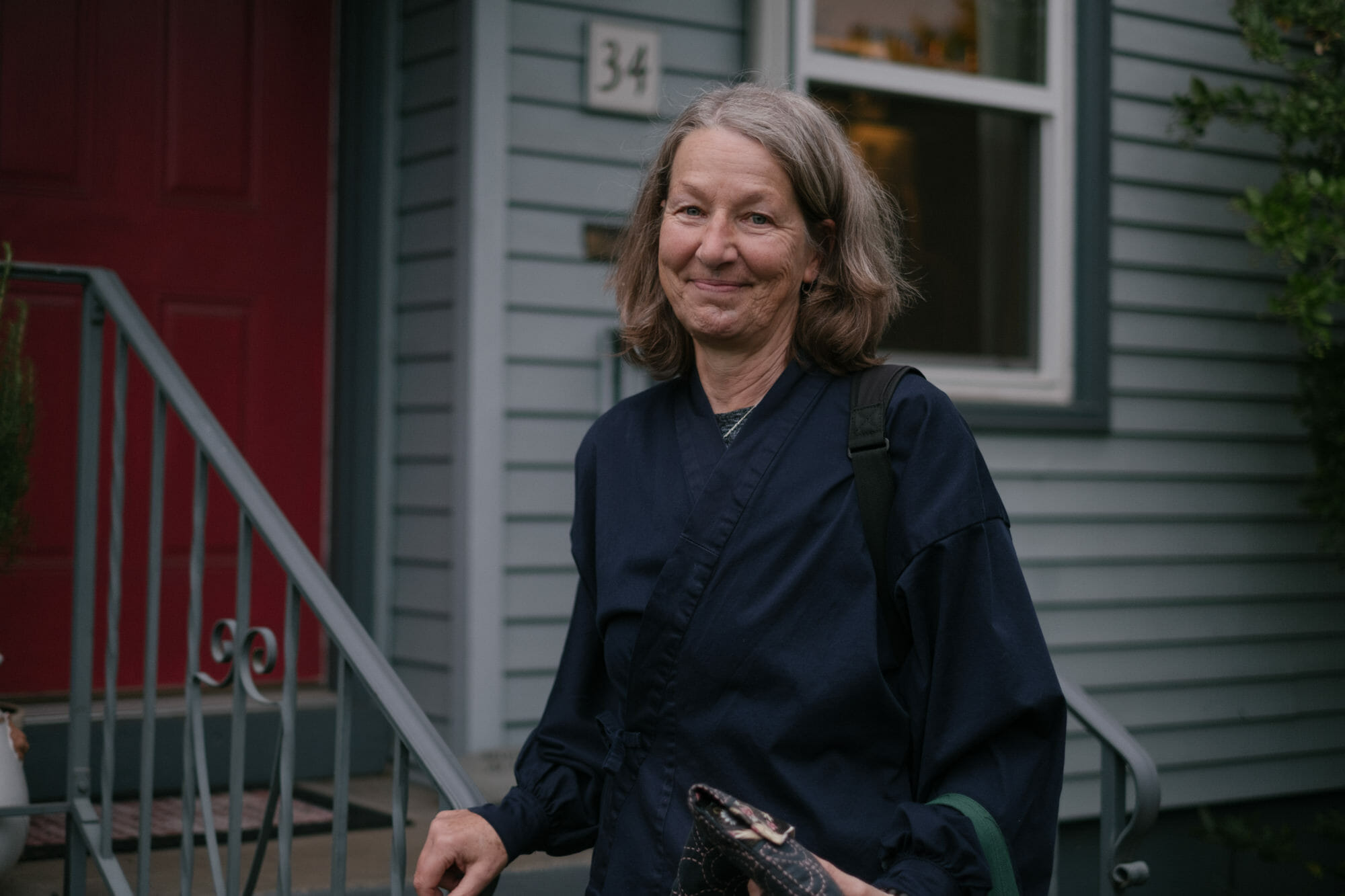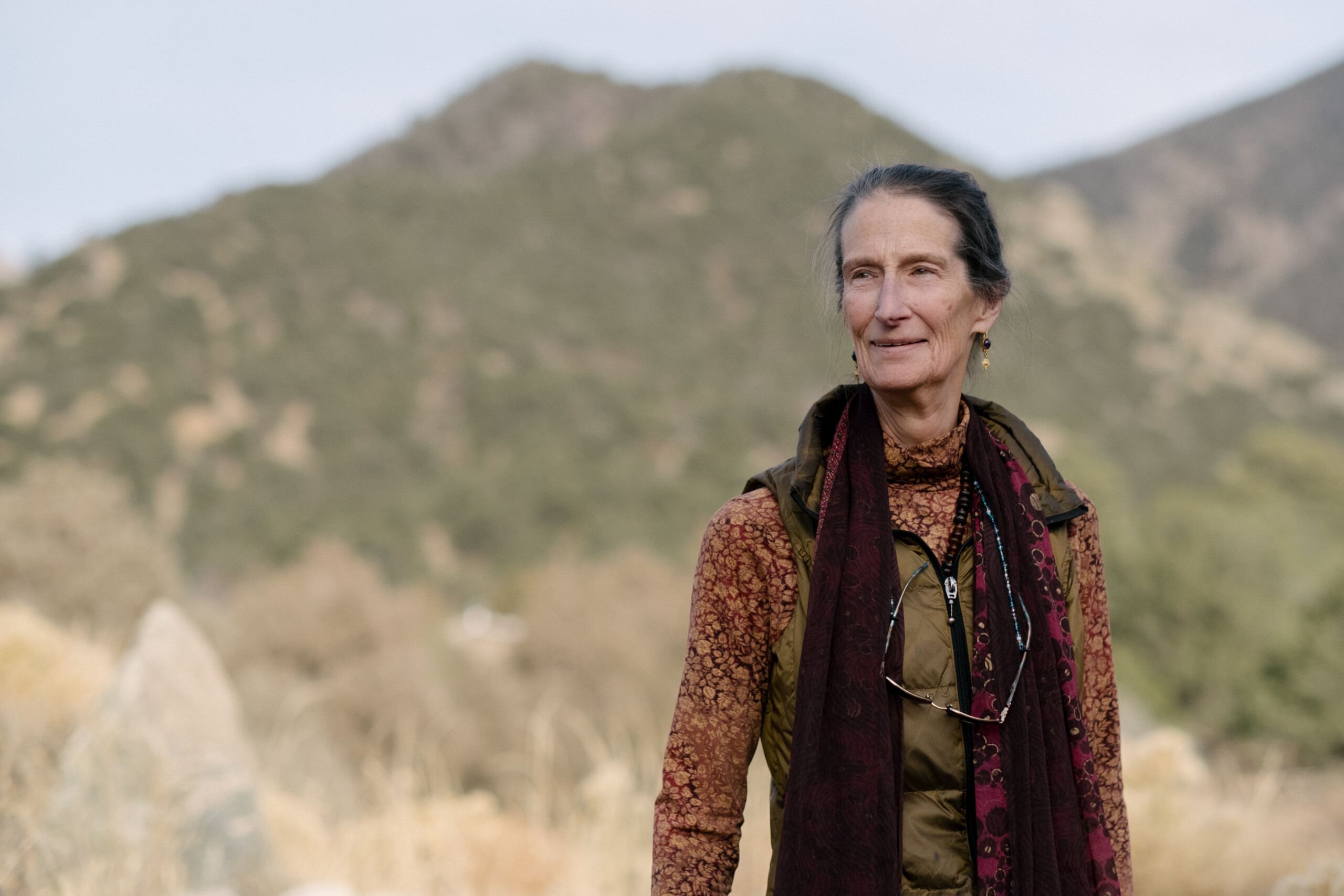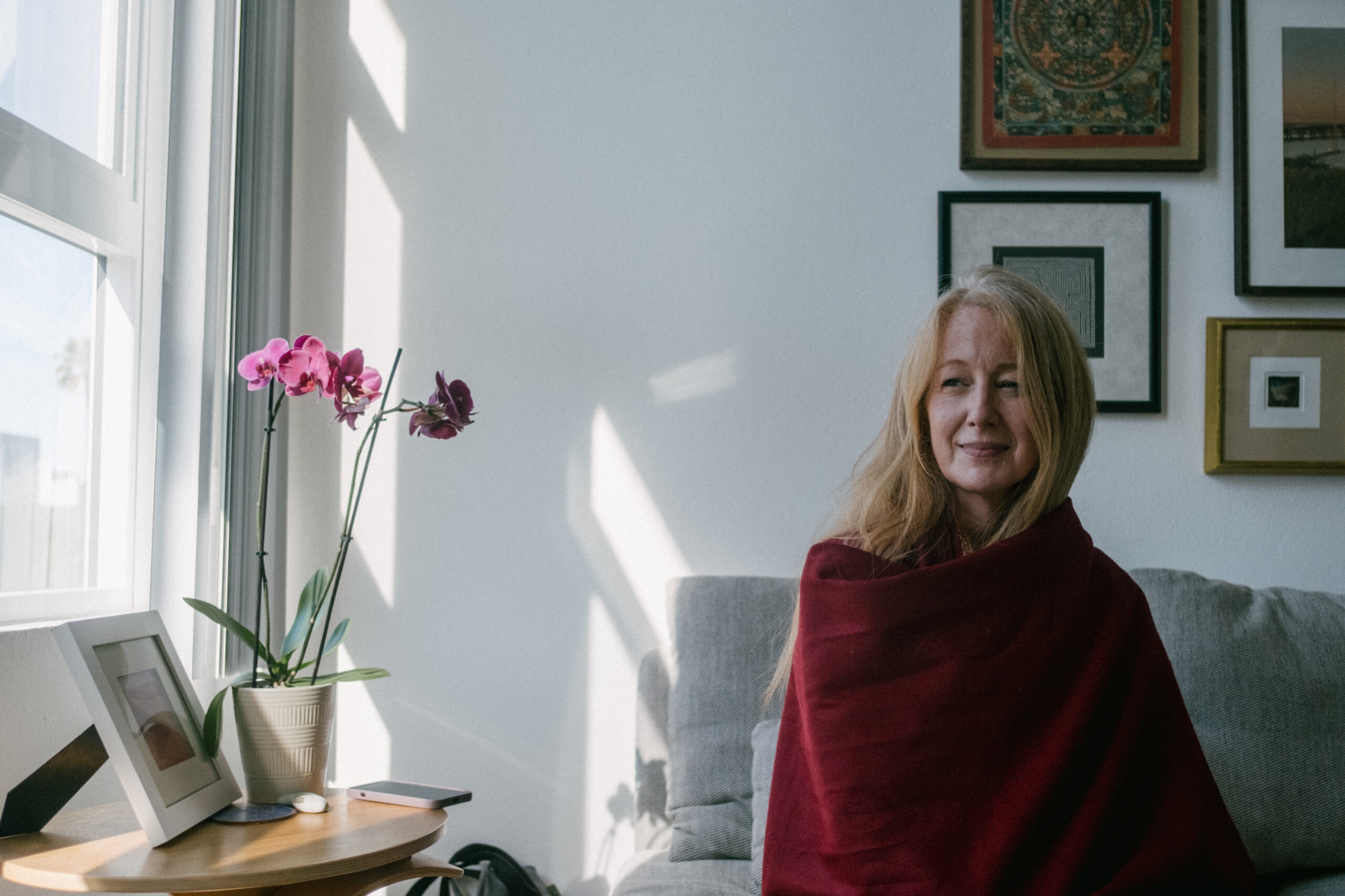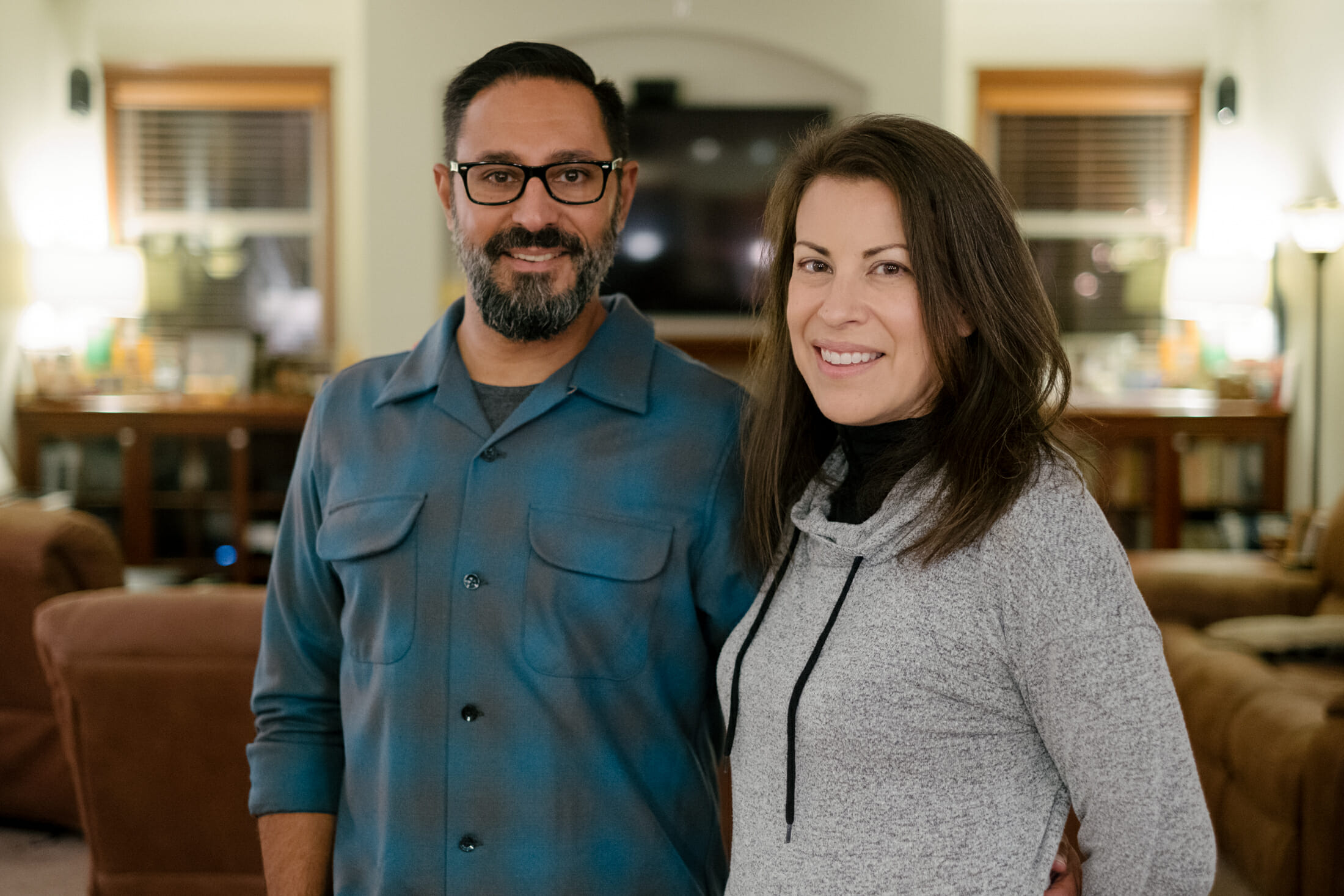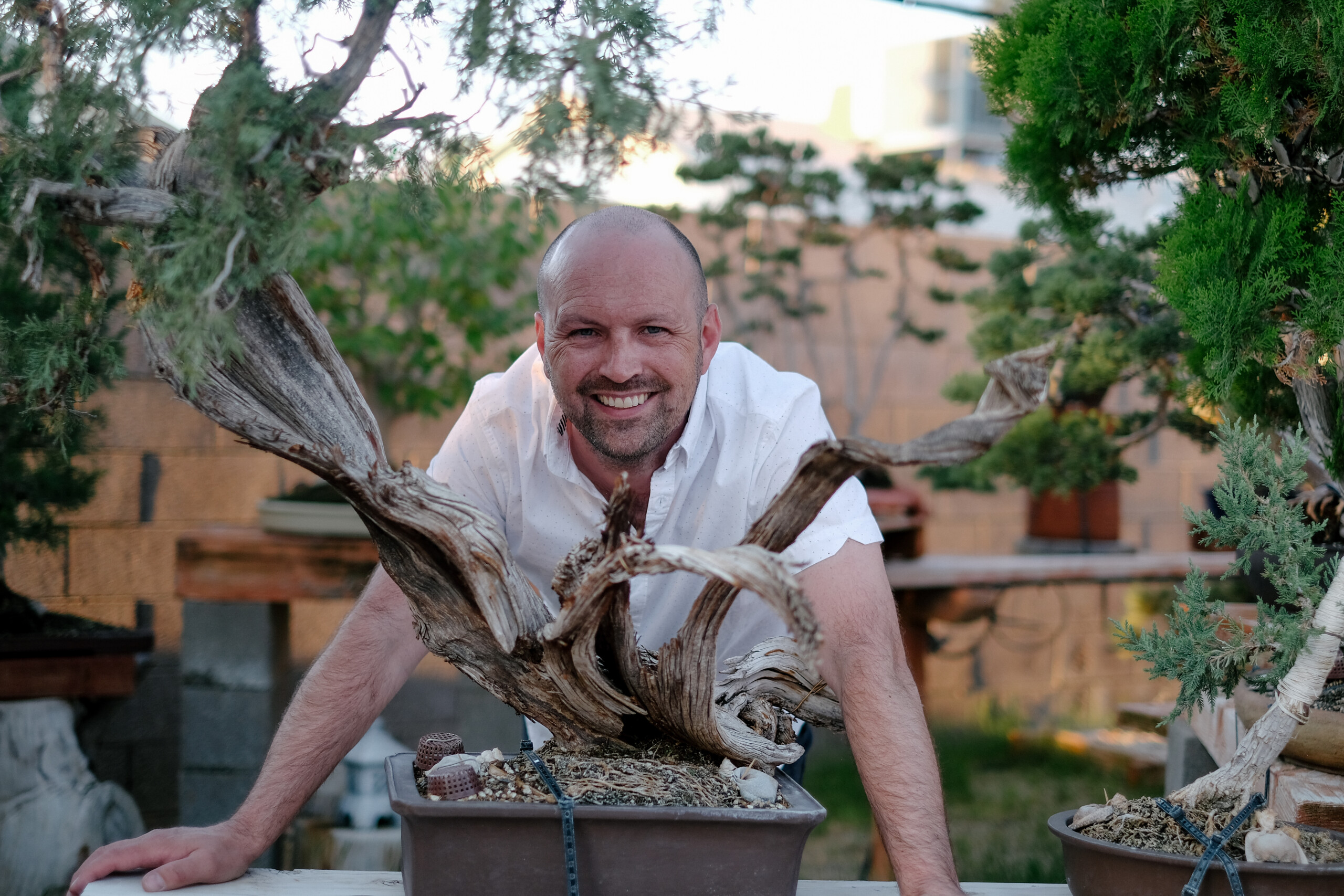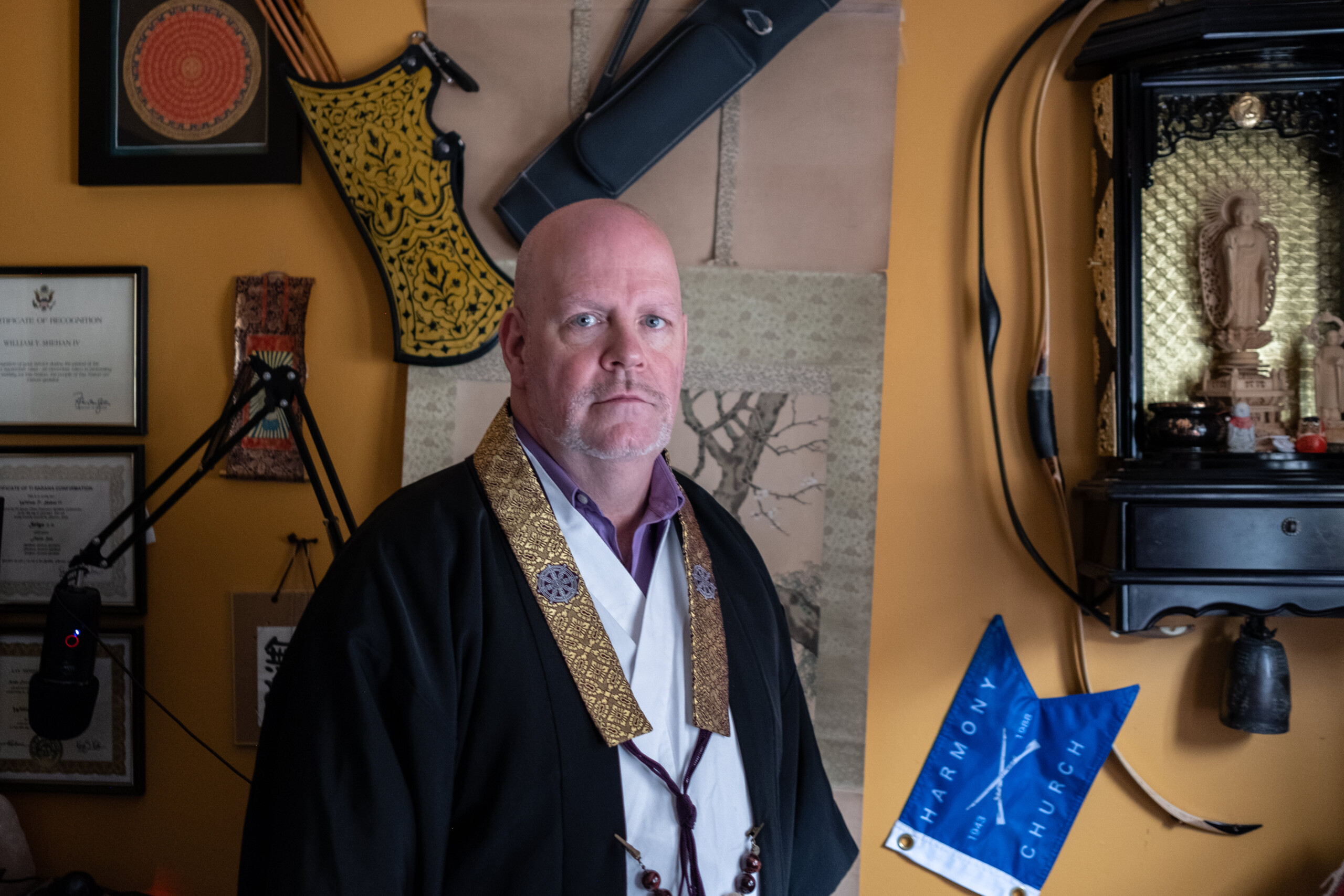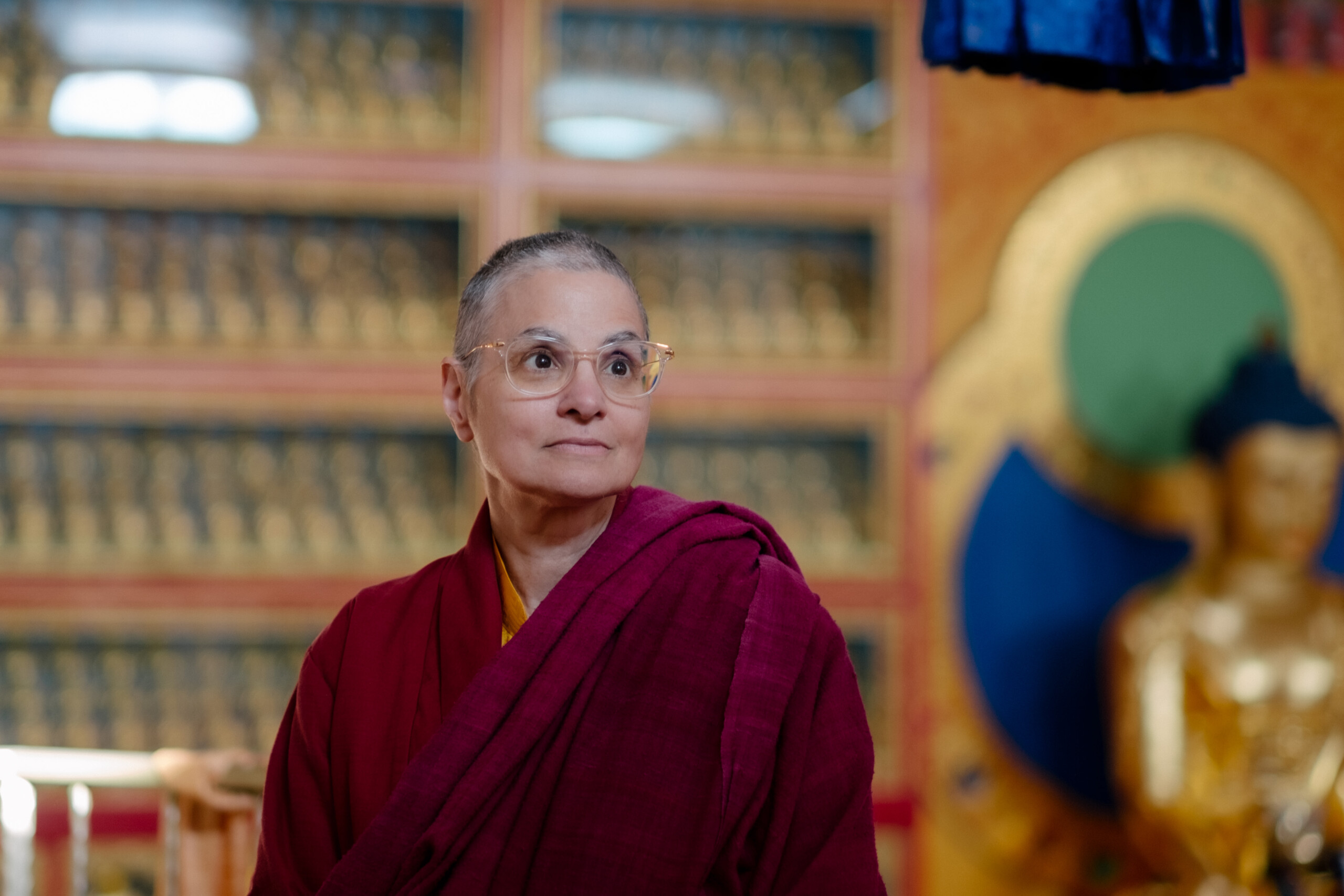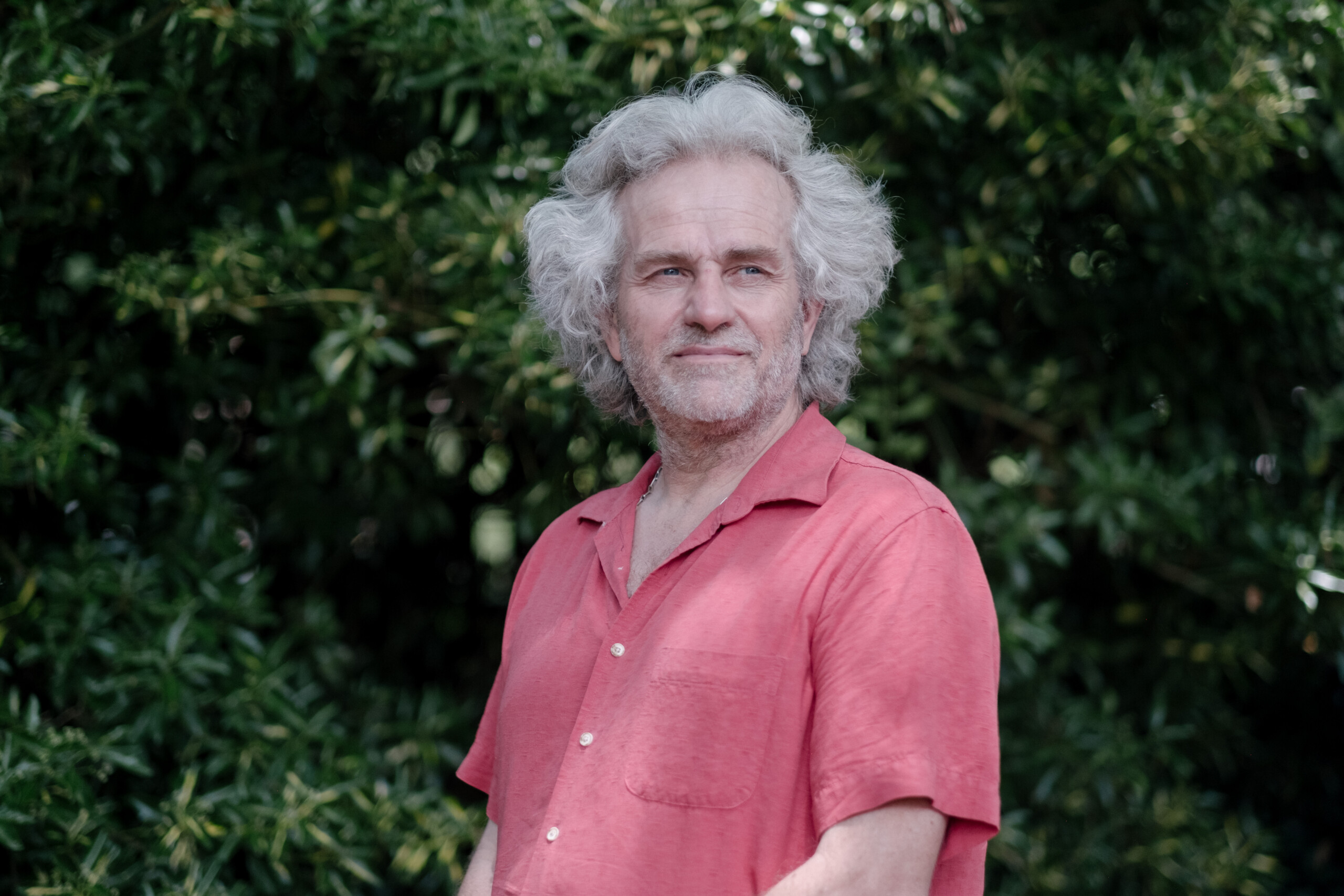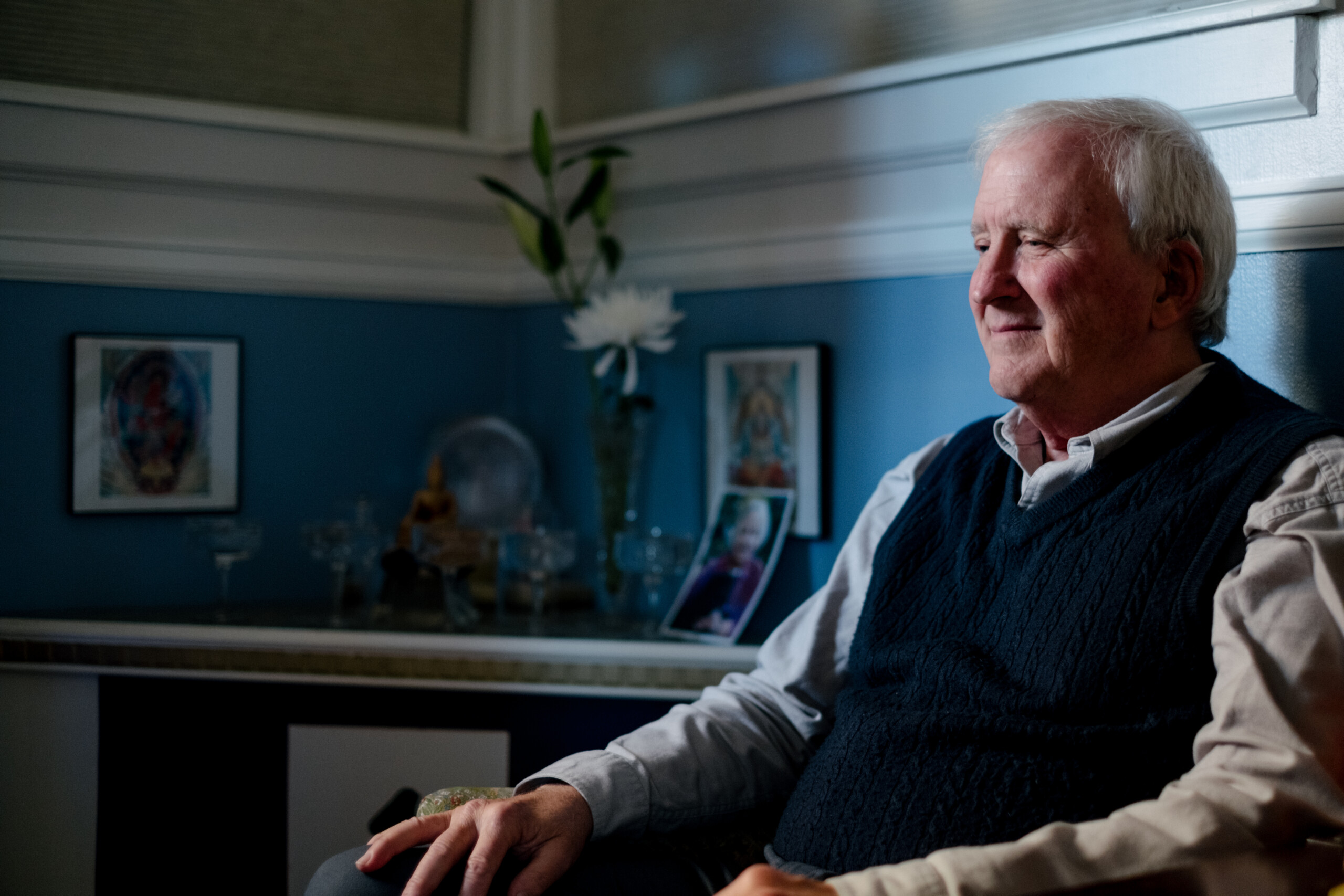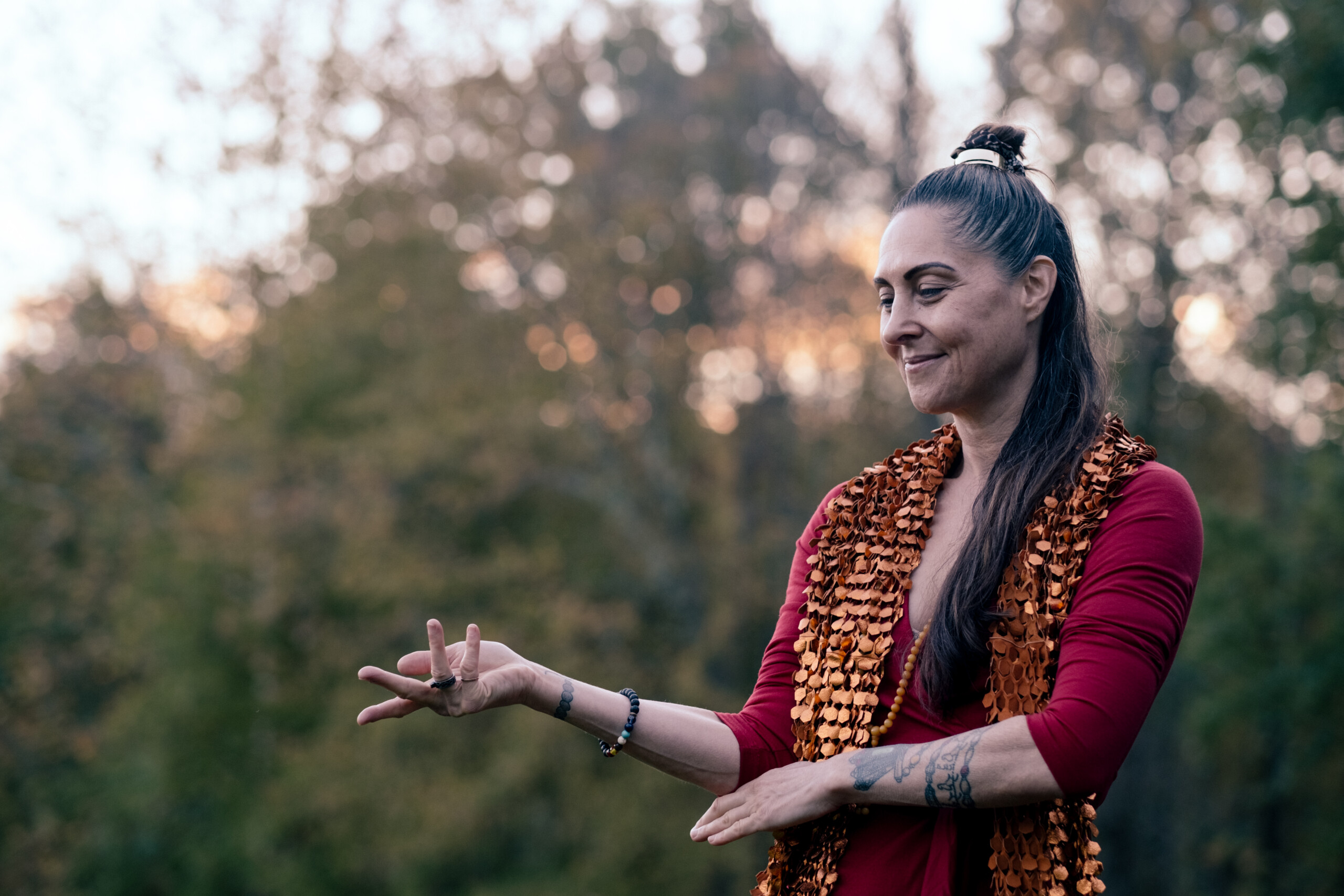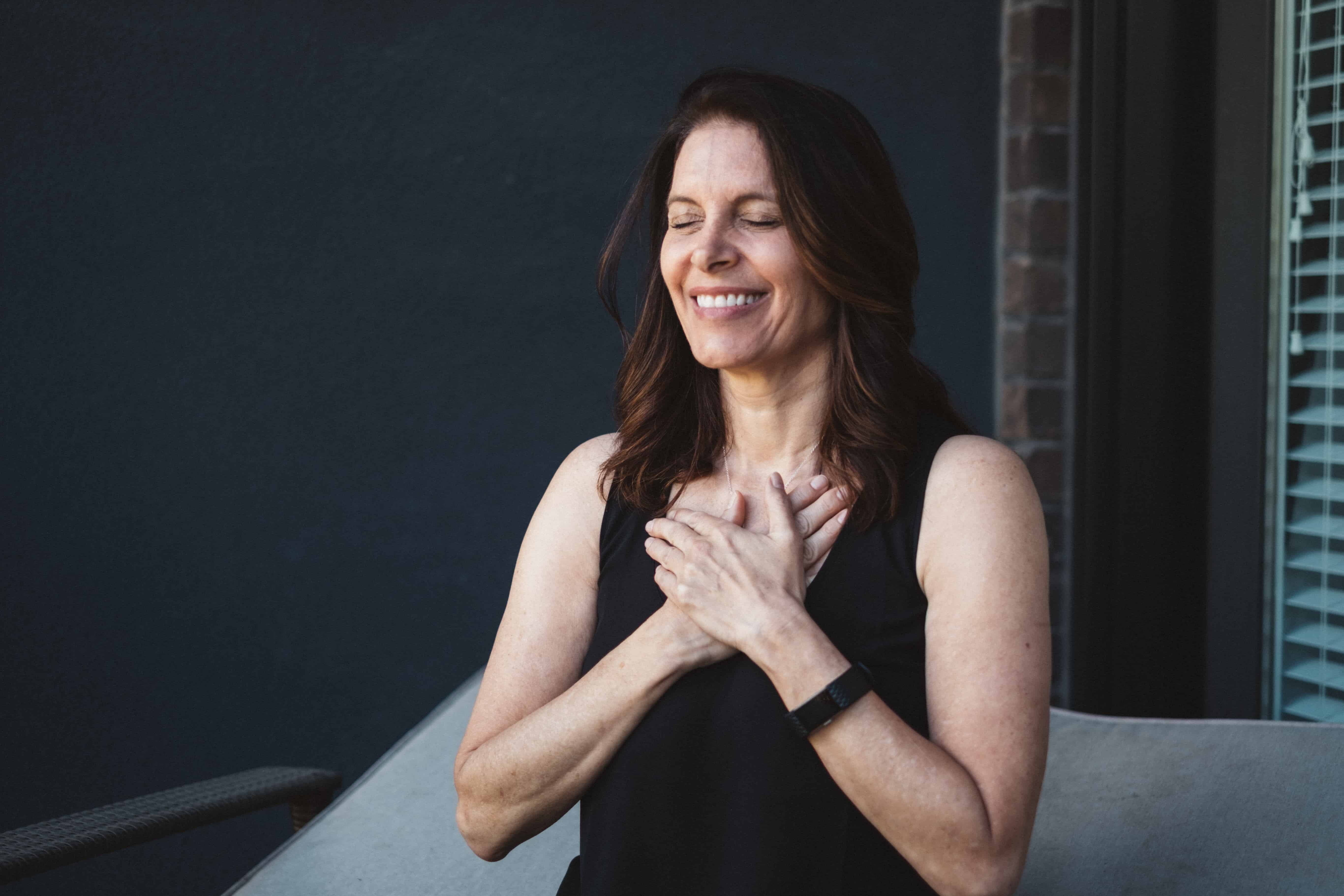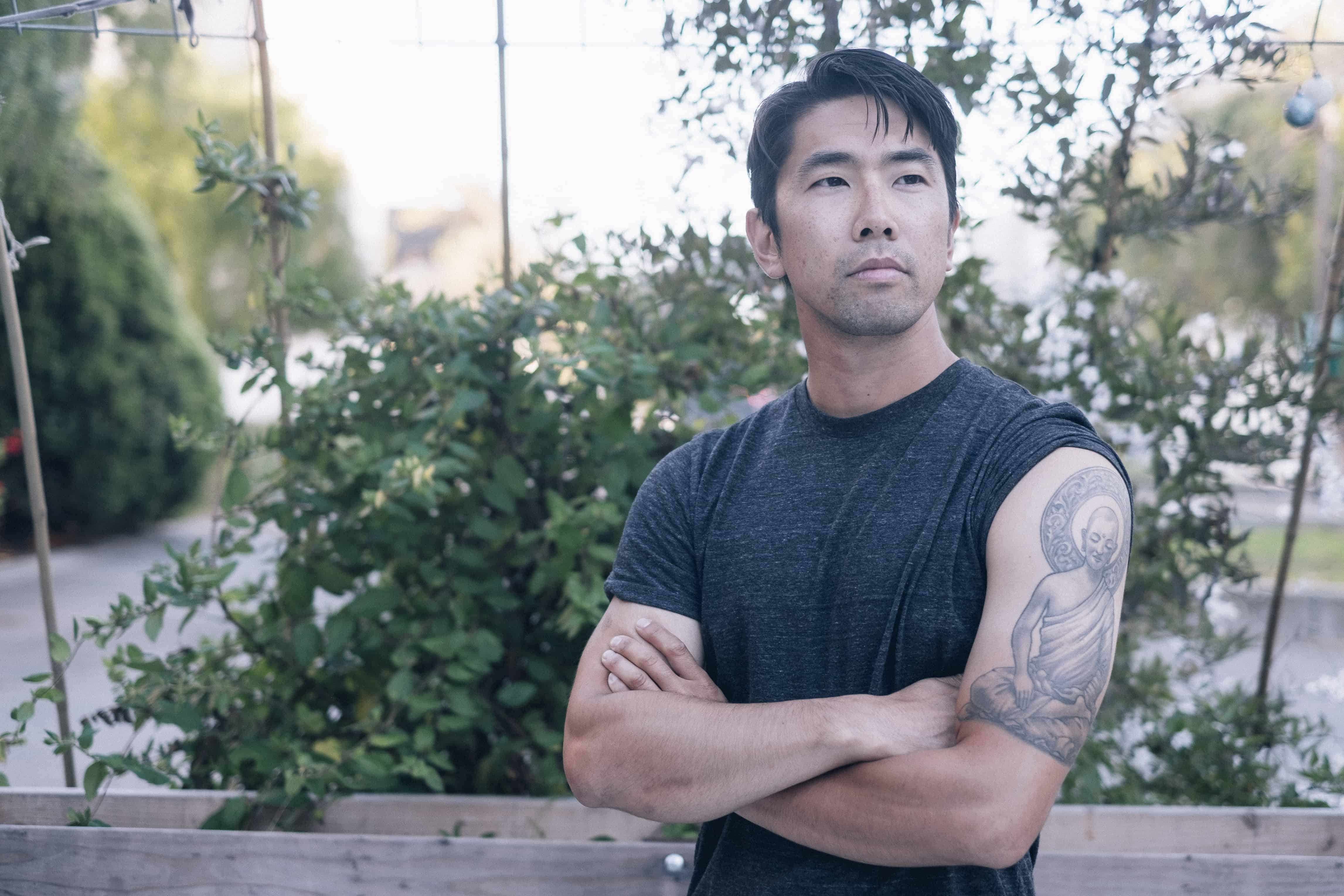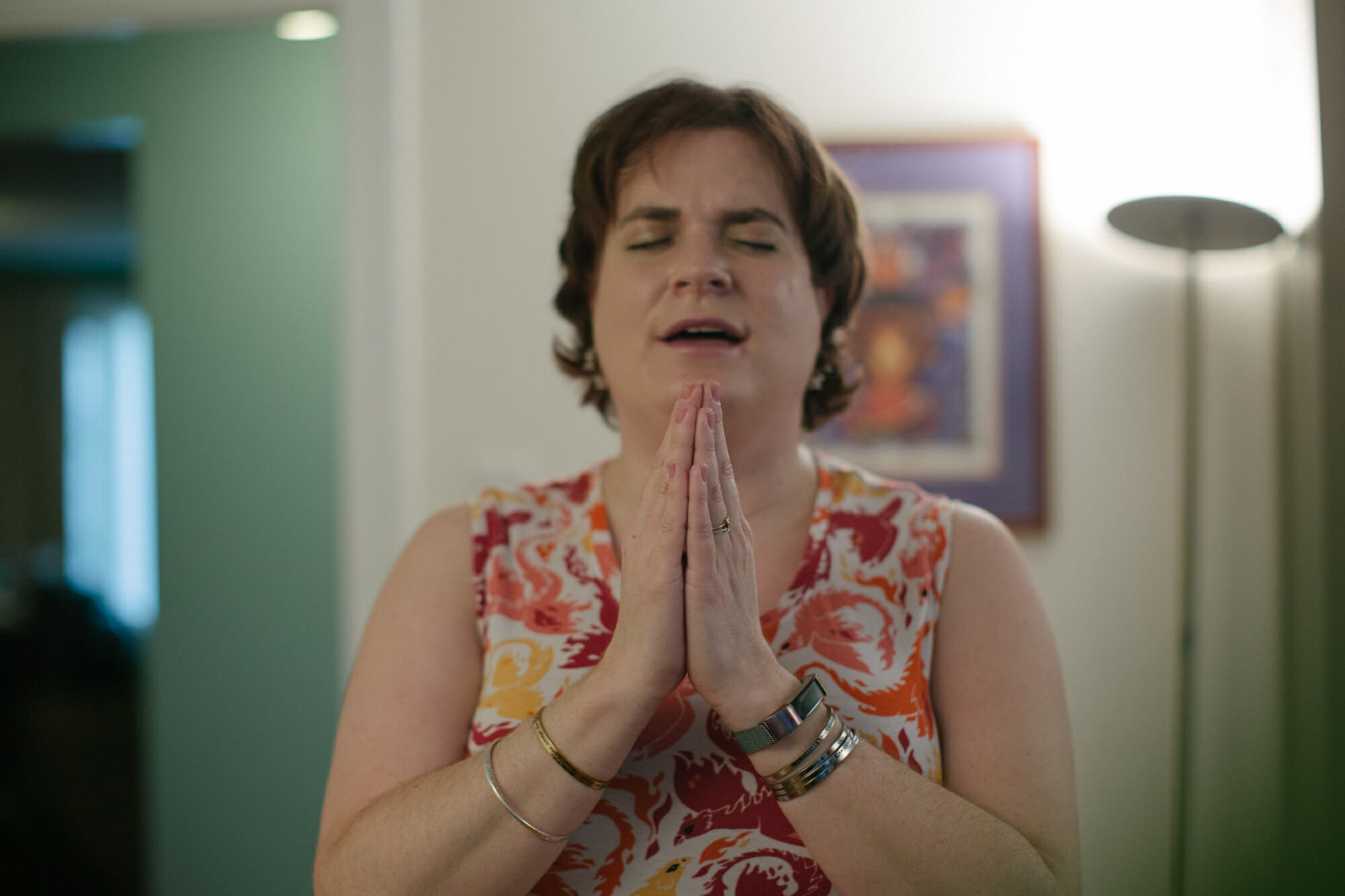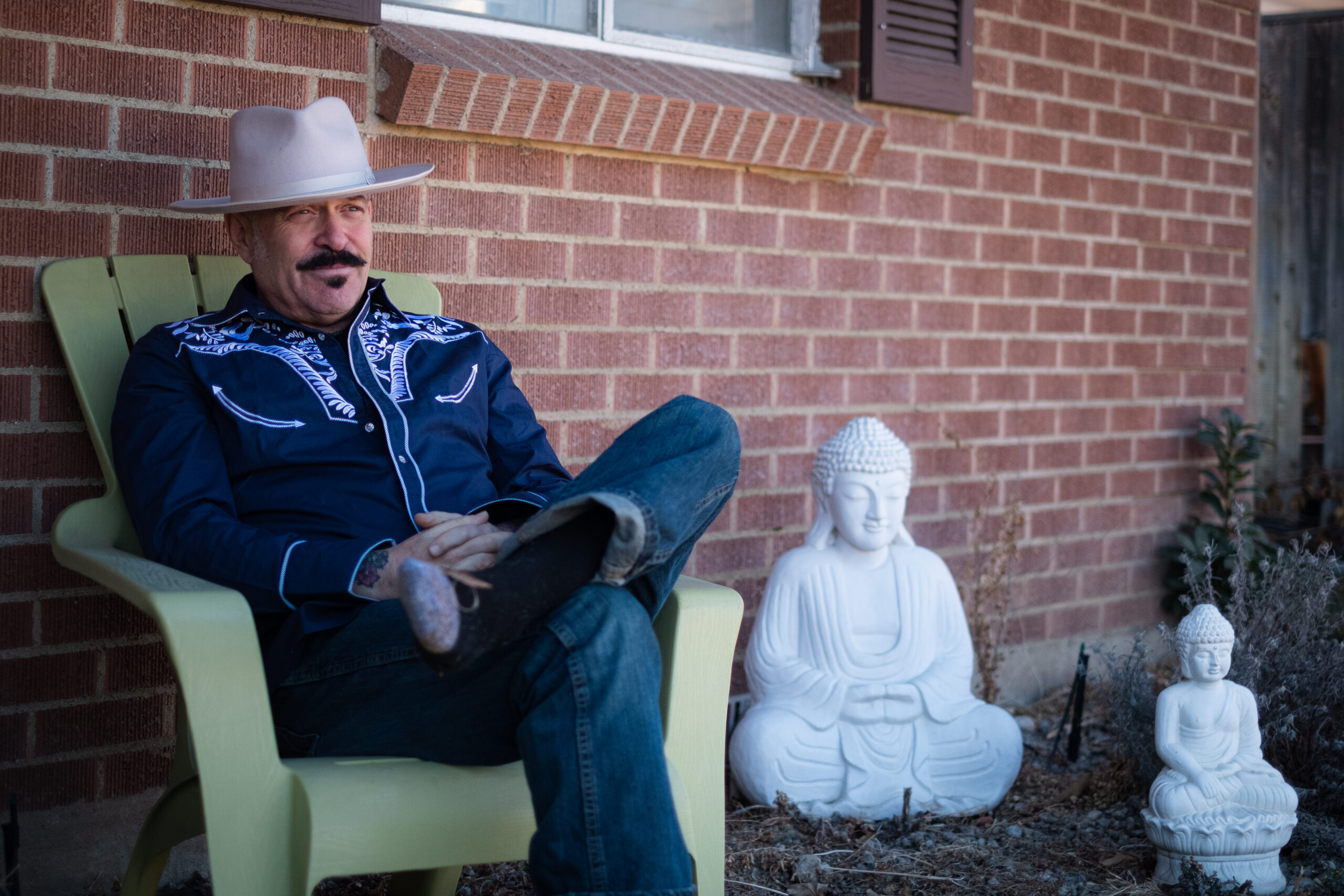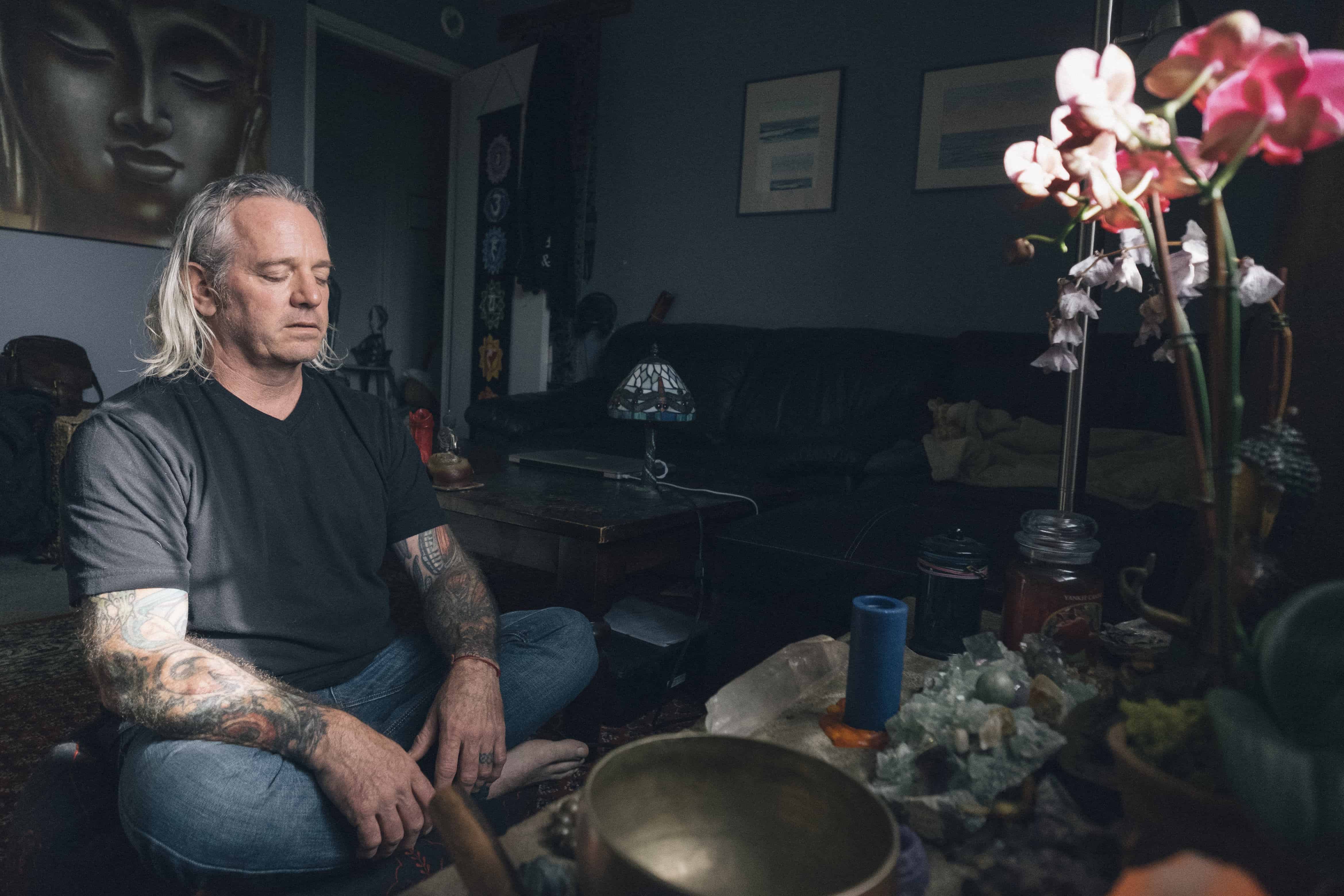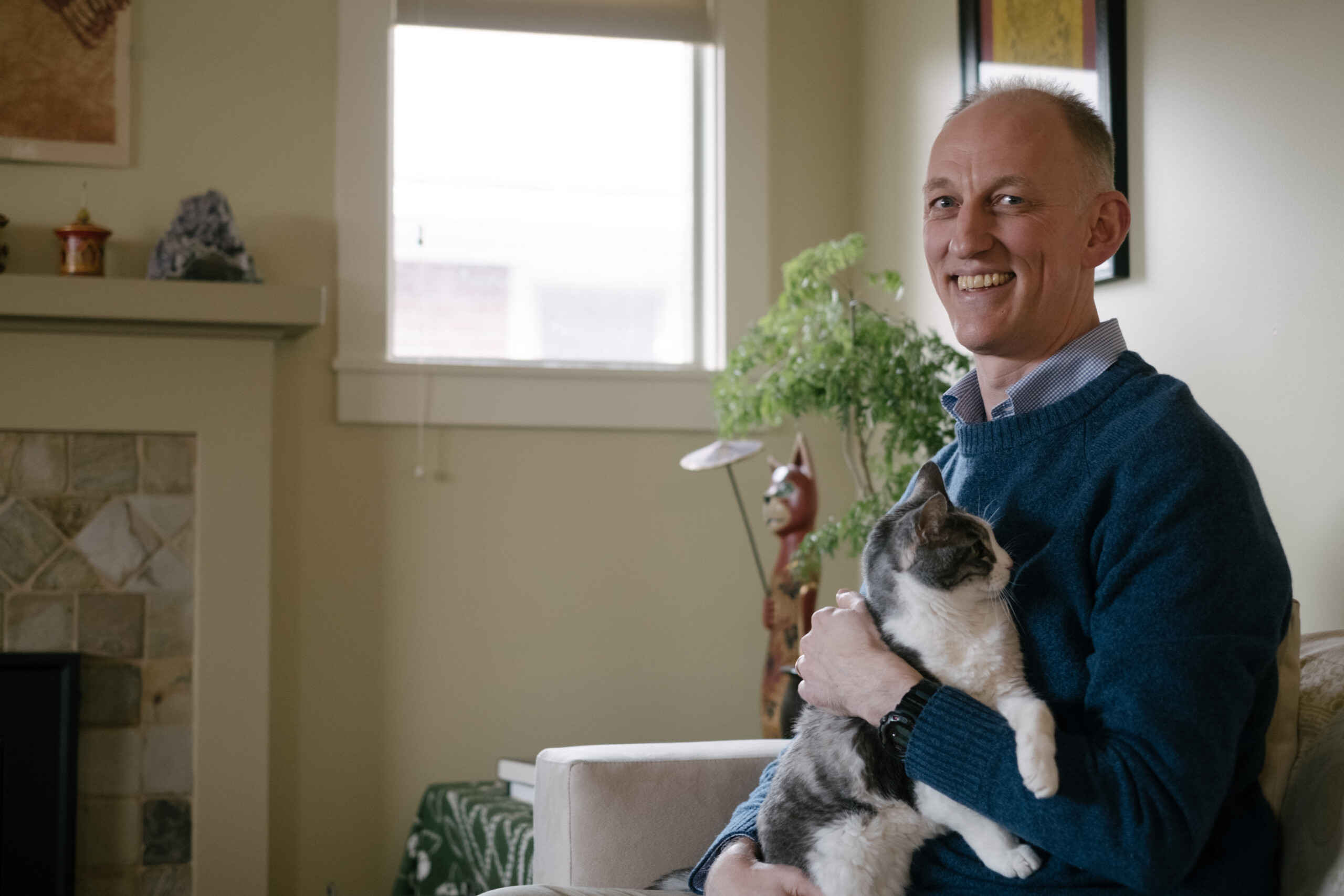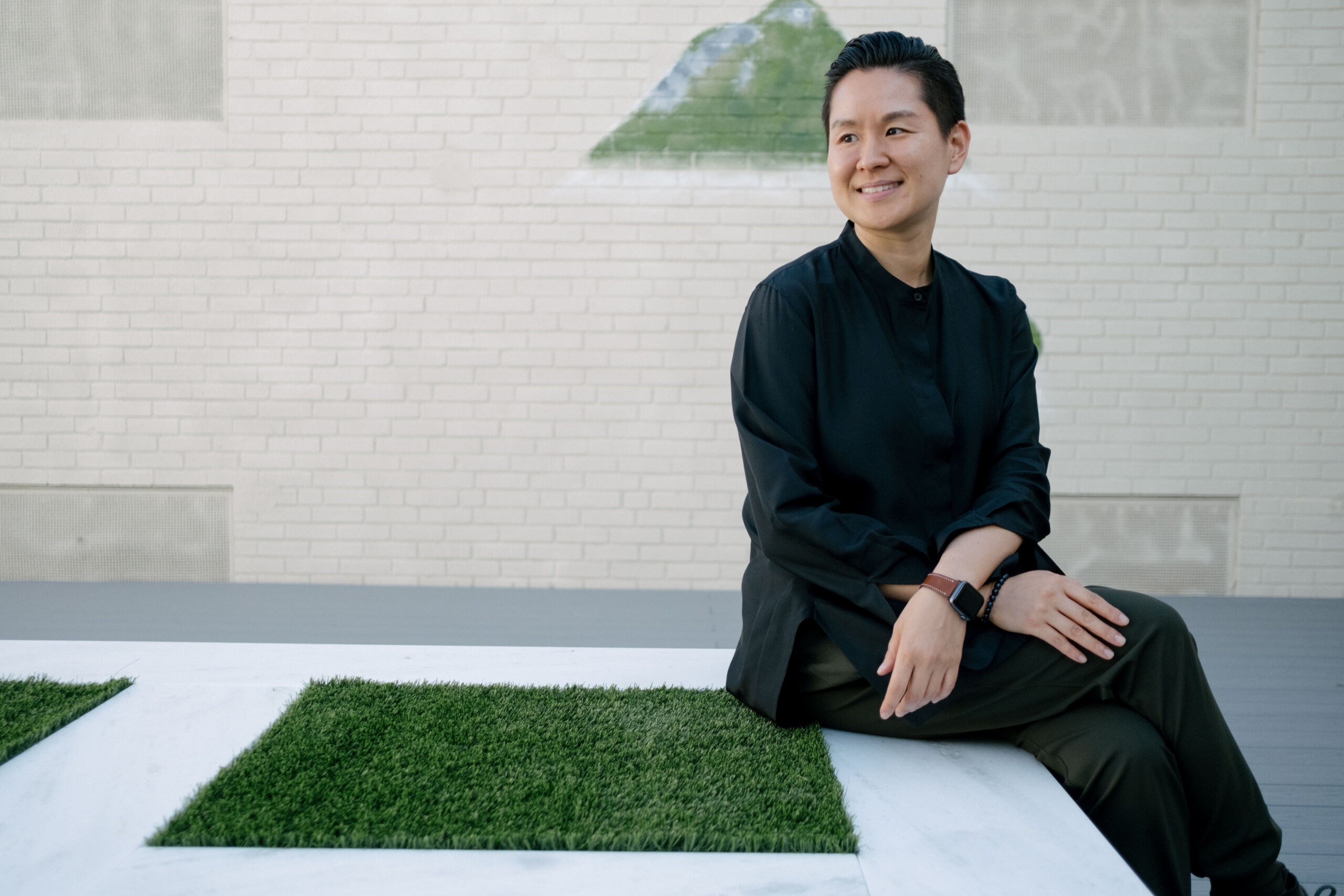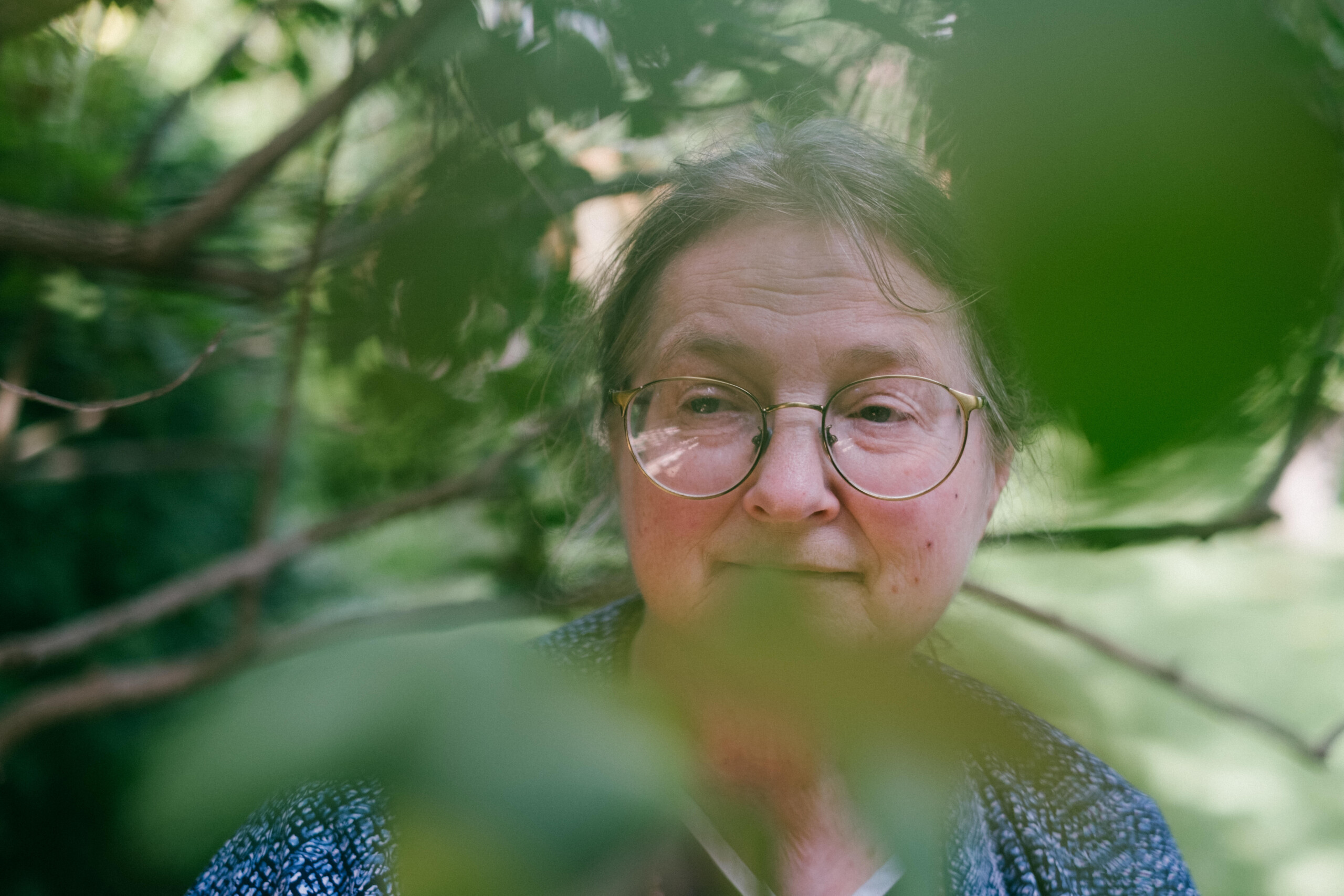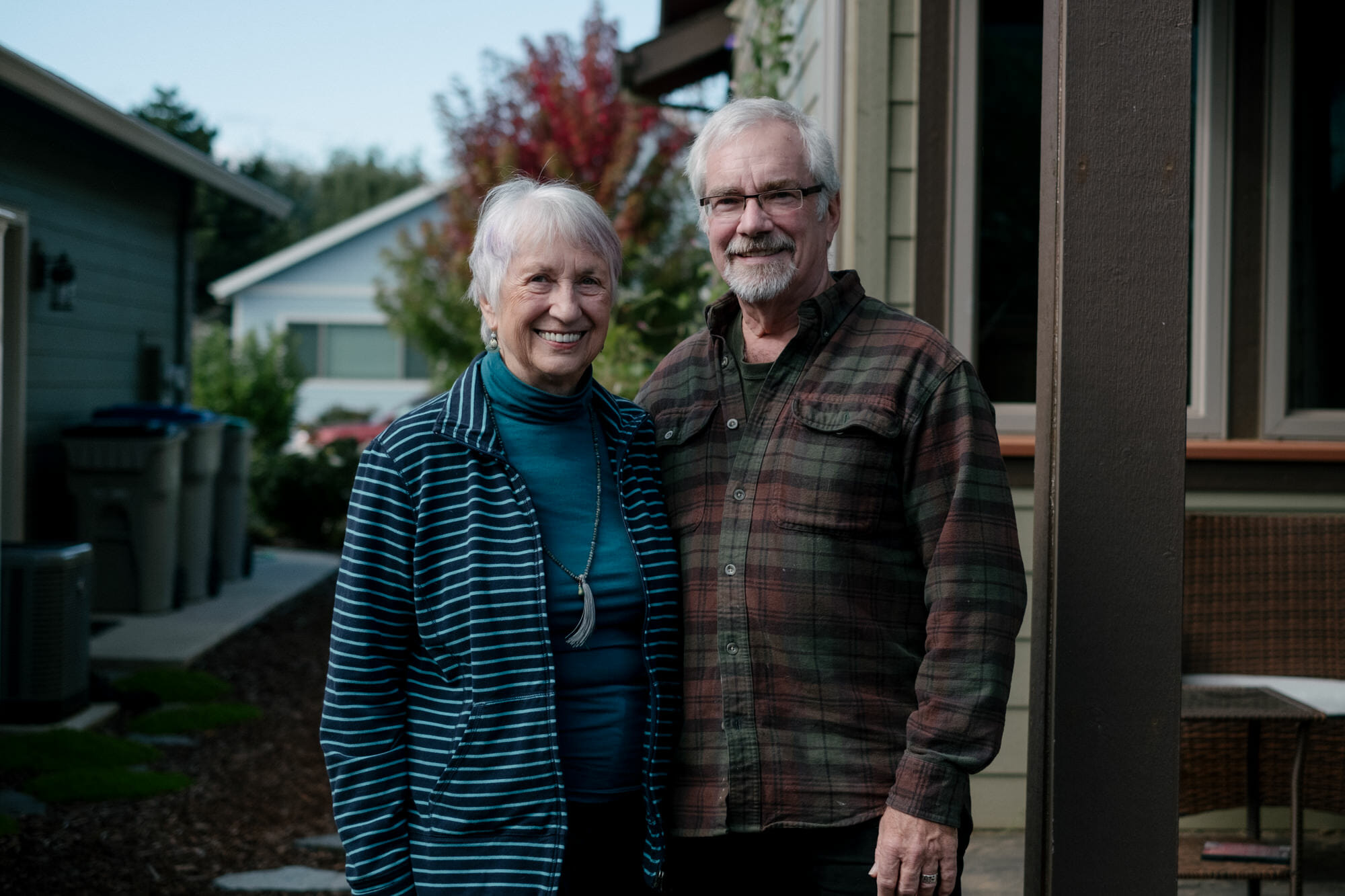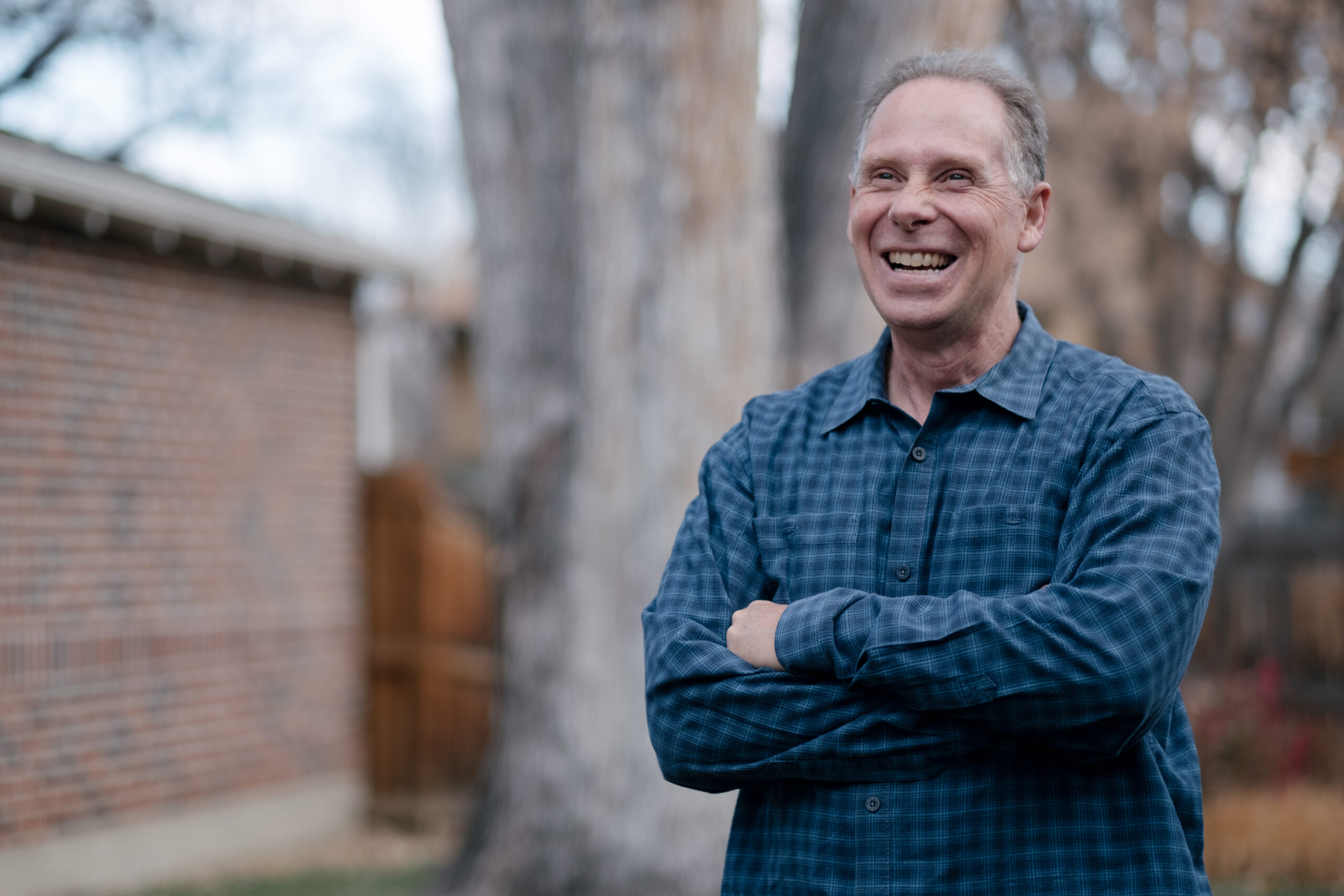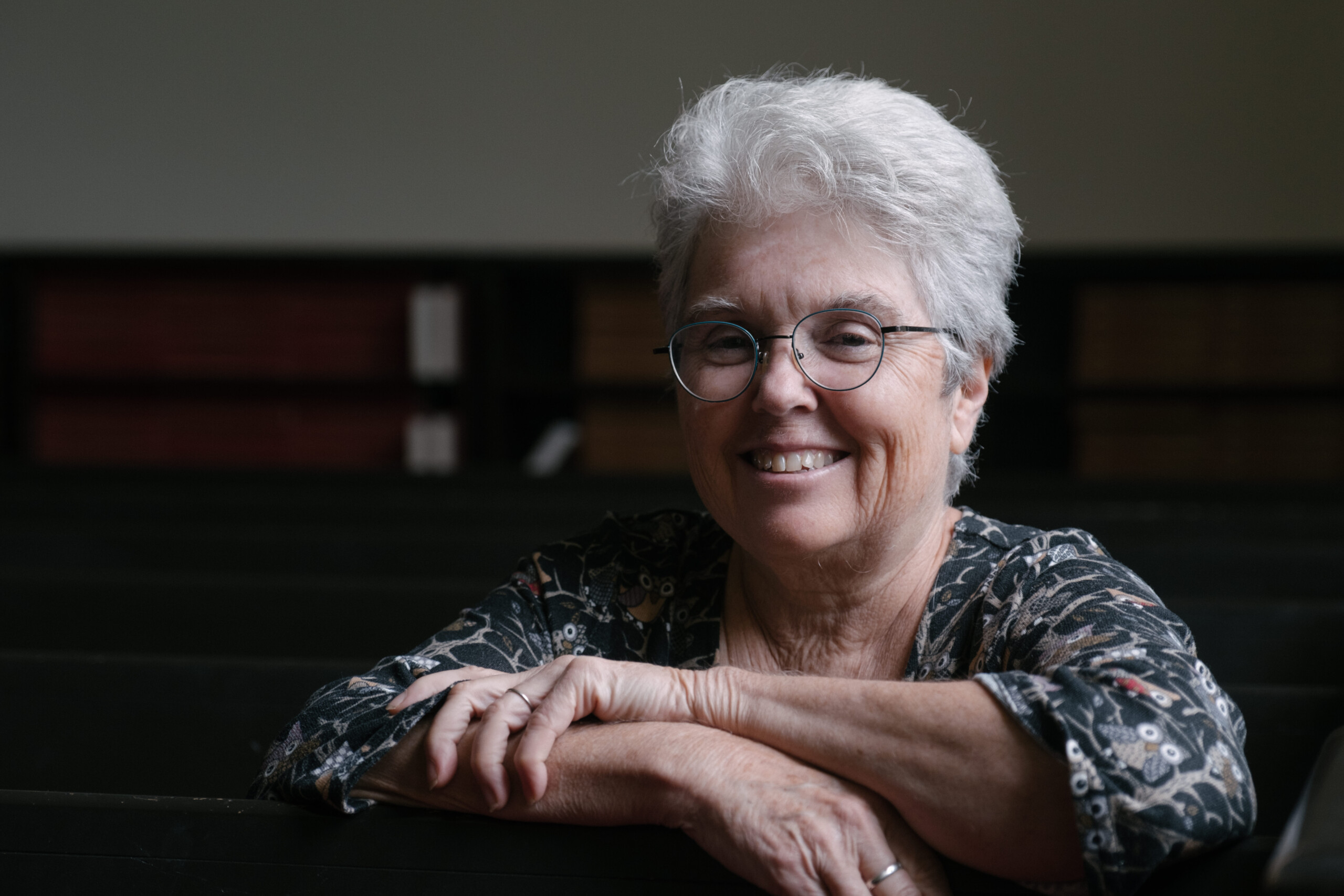When were you first exposed to dharma?
I encountered spiritual practice through reading BKS Iyengar’s Light on Yoga when I was 18 and immediately trying a number of the forbidden pranayama techniques that he described in the back of the book, because of course this is what you do when you’re 18.
For whatever reason those breathwork techniques caused a full-blown kundalini awakening experience. This was very difficult to handle. I connected with my dad’s yoga teacher basically to help me cope with what was happening, which she did. I began practicing Mysore-style Ashtanga Yoga with her, but she was also a student of Shinzen Young. So this was not the “Dharma” proper, as in a Buddhist lineage, but rather the living tradition of awakening as it’s expressed through many forms. Several years later in college, a friend of mine took me to Rinzai Zen Monastery called Dai Bosatsu Zendo in Upstate, New York. After this, the Buddhist and Yogic frameworks have sort of been wrestling for control of my practice… I’m really a hybrid practitioner in this way.
What I resonated with about Zen was the elegance, the toughness, and the Bodhisattva principle. There were some folks at Dai Bosatsu who made a deep impression on me. I could tell that something very powerful was happening there that I needed to understand and be a part of.
What are some of the challenges that you have experienced on your journey?
The main thing for me has been panic. Ever since I was in college I have had panic attacks and occasional severe anxiety. I’ve gone to the ER many times for this. It’s always about the fear of death or my body failing or imploding somehow.
I recently had to leave a monastery largely because of this. Now I’m working with an excellent Chinese Medicine doctor in my area. I’m learning that this path really isn’t just about how much you sit or the rigor of your daily schedule… It’s also how you hold your practice and your life. It’s how you treat your body and others. It really is. What you do yourself or others comes back around, even if you do it in the name of the “Dharma,” awakening or whatever.
A strong, healthy, integrated identity is incredibly important to provide a foundation for the deeper aspects of the path. In some ways I jumped in too deep too quickly, so I’m sort of in a chilling out and healing phase right now. Focusing on asana, metta practice, mantra, and learning about ayurveda and Chinese Medicine.
How has the path manifest in your daily experience?
My experience was that the path took me over completely basically immediately. It was immediately life or death. After that first awakening experience, it was clear that resolving this and coming into the right relationship with this new energy that was moving through my system was the only thing to do. This is a blessing and a curse. You can’t ignore it.
Some intuition in me came alive that is far smarter than me, and I am basically just trying to follow that and hanging out for the ride. I’ve still messed up a lot of things since then and there’s clearly a lot more work to do. But generally, I feel like mostly what I’m doing now is just riding this wave of intuition that came alive then and has been growing for as long as I’m practicing.
During the remainder of my college experience, I began doing a lot of work to make these practices more accessible to other young people. At first, this was through helping to organize a student meditation group. Doing my senior year, I started building a nonprofit organization called Dharma Gates to open pathways into deep meditation practice for other young people. Since graduating, Dharma Gates has continued to grow. This work and my own practice have been the two focus points of my life. So my work and relationships at this point are basically all about Dharma. It’s a bit myopic honestly but feels right. It’s like I’m being sucked into a (wonderful) black hole that I can’t escape.
What are some of the challenges that you have experienced on your journey?
The main thing for me has been panic. Ever since I was in college I have had panic attacks and occasional severe anxiety. I’ve gone to the ER many times for this. It’s always about the fear of death or my body failing or imploding somehow.
I recently had to leave a monastery largely because of this. Now I’m working with an excellent Chinese Medicine doctor in my area. I’m learning that this path really isn’t just about how much you sit or the rigor of your daily schedule… It’s also how you hold your practice and your life. It’s how you treat your body and others. It really is. What you do yourself or others comes back around, even if you do it in the name of the “Dharma,” awakening or whatever.
A strong, healthy, integrated identity is incredibly important to provide a foundation for the deeper aspects of the path. In some ways I jumped in too deep too quickly, so I’m sort of in a chilling out and healing phase right now. Focusing on asana, metta practice, mantra, and learning about Ayurveda and Chinese Medicine.
What are some of your practices/rituals that you do to support your spiritual development?
The foundation of my practice is definitely my ashtanga yoga practice and seated meditation. Mostly, I’ve worked with mindfulness of breathing, mindfulness of the body, “Zazen.” Recently I’ve been working more with Metta and prayer. I’ve also begun working with Tea as a plant medicine through the guidance of my partner who does tea ceremony. This has been very powerful for me recently as well.
Over time, I am coming to see that there really is the right medicine for the right time. I’ve experimented a lot, but I think heart-based practice, devotional practice, and energy-based practices (which I see asana as a part of) are broadly speaking what have worked best for me and where I’m drawn to put my energy right now.
Background
Aaron’s journey began at the age of 18 when he discovered a book on yoga before heading to college. Intrigued, he delved into the practices, particularly exploring breath work exercises in the Book of Pranayama. Despite warnings, he experimented with these exercises, leading to a profound awakening experience that changed the course of his life.
Identifying the energy he discovered as Kundalini, Aaron realized the need for support from Eastern traditions. Seeking guidance, he reached out to Angela, his father’s ashtanga yoga teacher in Ann Arbor. She provided breathing exercises and encouraged him to decide whether to walk the path. Aaron embraced the transformative yet challenging experiences, incorporating ashtanga yoga to ground himself.
Taking a year off from college, Aaron ventured to India, studying yoga and gradually integrating these practices into his life. Despite the difficulty of finding a supportive community in college, he persisted. In 2017, a connection led him to visit Diversity Zendo, a Zen monastery in upstate New York, marking a powerful encounter with Zen and the Dharma.
Aaron’s dedication to Zen and monastic practices intensified throughout college, with visits to various monasteries, including Great Vow Zen Monastery and the Ann Arbor Zen Buddhist temple. A pivotal moment occurred after participating in Great Vow’s summer program, inspiring him to bridge the gap between young people and Zen monasteries.
Collaborating with Miles, a fellow practitioner, Aaron founded Dharma Gates, a nonprofit aimed at connecting young people with Zen practice. After graduating, he moved to the Ann Arbor Zen Buddhist temple, later spending nine months at the monastic academy in Vermont. Aaron continues to balance his passion for Ashtanga and Buddhism, navigating his unique spiritual journey while working towards furthering Diamond Gates’ mission. The future holds possibilities of returning to monastic life or pursuing deeper retreat practices.
Retreats
Aaron reflects on the transformative power of retreat experiences, emphasizing their profound impact on deep-seated aspects of the self. He notes that these retreats offer relief from suffering by providing an opportunity to explore the mind’s depths and find an inner resilience despite external challenges. The perspective gained during retreats allows individuals to navigate the world with a sense of calm and distance, even when facing surface-level issues that may not be fully integrated.
Recognizing the importance of informing people about the availability of such opportunities, Aaron highlights the concept of refuge— the ability to step away and spend time in solitude to address inner struggles. He believes that this knowledge should be widespread in society, ensuring that individuals are aware of alternatives to conventional approaches like medication or institutionalization.
Aaron sees monasteries not just as places to escape the world but as training centers where one can learn unique skills. He emphasizes the benefits of a clearer mind in making a positive impact on the world, stating that monastic training is unparalleled in relieving personal suffering and equipping individuals to address suffering on a broader scale. He encourages people to recognize the nuanced nature of deep practice, especially for those with certain mental health or trauma backgrounds, while still advocating for the potential life-changing impact of encounters with dedicated practitioners in a monastery setting. Ultimately, Aaron suggests that establishing connections with monastic communities can alter one’s worldview, emphasizing the enduring value of such experiences.
Challenges
The initial years of Aaron’s spiritual journey were tumultuous, deviating from the traditional path outlined by the Buddha. While the typical progression involves purifying ethics and gradually cultivating mindfulness, Aaron found himself in college, engaging in a lifestyle characterized by drinking, smoking, and casual relationships. This misalignment with ethical principles created challenges when he experienced an awakening.
The awakening brought a surge of energy, but Aaron struggled with unresolved habits and ethical conflicts. Attempting to balance his newfound spiritual experiences with his existing lifestyle led to periods of borderline psychotic episodes. The powerful energy demanded a reevaluation of his behaviors, including refraining from substances like weed and alcohol, and adopting a more disciplined lifestyle.
As Aaron navigated this transformative period, he discovered the supportive role of Ashtanga yoga in addressing addiction and bodily cravings. Ashtanga’s emphasis on purifying energy and creating softness in the body proved beneficial in breaking negative patterns associated with substances.
Despite the positive impact of Ashtanga, Aaron acknowledged the challenges in managing increased energy. Zen practice, with its focus on concentration and breathing, presented a mixed experience. While he appreciated learning concentration techniques, Aaron reflected on how it may have initially reinforced certain delusions, making aspects of his journey more challenging.
In summary, Aaron’s early spiritual journey involved a struggle to align his newfound awakening with an existing lifestyle, leading to a transformative process that required significant adjustments and the exploration of various practices, including Ashtanga yoga and Zen meditation.
Authenticity
The initial years of Aaron’s spiritual journey were tumultuous, deviating from the traditional path outlined by the Buddha. While the typical progression involves purifying ethics and gradually cultivating mindfulness, Aaron found himself in college, engaging in a lifestyle characterized by drinking, smoking, and casual relationships. This misalignment with ethical principles created challenges when he experienced an awakening.
The awakening brought a surge of energy, but Aaron struggled with unresolved habits and ethical conflicts. Attempting to balance his newfound spiritual experiences with his existing lifestyle led to periods of borderline psychotic episodes. The powerful energy demanded a reevaluation of his behaviors, including refraining from substances like weed and alcohol, and adopting a more disciplined lifestyle.
As Aaron navigated this transformative period, he discovered the supportive role of Ashtanga yoga in addressing addiction and bodily cravings. Ashtanga’s emphasis on purifying energy and creating softness in the body proved beneficial in breaking negative patterns associated with substances.
Despite the positive impact of Ashtanga, Aaron acknowledged the challenges in managing increased energy. Zen practice, with its focus on concentration and breathing, presented a mixed experience. While he appreciated learning concentration techniques, Aaron reflected on how it may have initially reinforced certain delusions, making aspects of his journey more challenging.
In summary, Aaron’s early spiritual journey involved a struggle to align his newfound awakening with an existing lifestyle, leading to a transformative process that required significant adjustments and the exploration of various practices, including Ashtanga yoga and Zen meditation.
Fruit of Practice
In the realm of extended meditation or Dharma practice, Aaron emphasizes the profound release that occurs, particularly the letting go of ingrained stories, clinging, views, and beliefs about the world. This process is crucial, especially in a cultural landscape laden with what he describes as a “house of cards” built on lies, exploitation, and systemic issues tied to capitalism.
Aaron sees the essence of Dharma and yoga as fostering discernment, the ability to distinguish between truth and falsehood. He believes that humanity’s future hinges on individuals honing this discernment, shedding destructive narratives, and adopting value systems aligned with what is right and true. For Aaron, the transformative effect of releasing societal beliefs enables better decision-making and aligns one’s actions with a more ethical and authentic value system.
In his view, extended practice provides an opportunity to break free from societal currents and challenge prevailing beliefs that may contribute to harm. Aaron encourages individuals to question their beliefs, as many societal narratives are inherently flawed. By temporarily disengaging from these damaging stories, individuals gain clarity on how to navigate a world in transition, allowing them to contribute positively amidst a system undergoing transformation.
Lineage
Entering a Zen monastery for Aaron involves a powerful element of granting oneself full permission to break social norms. The monastery environment allows for a focused, introspective practice where individuals typically refrain from making eye contact or engaging in casual conversation. For Aaron, this approach aligns with the intense internal energy he experiences, making the monastery feel like the only path to follow.
The decision to fully immerse himself in the monastery experience comes from a recognition that this path demands the entirety of his being. It transcends a mere part-time commitment, and Aaron acknowledges the significance of honoring the call to fully engage with the practice. The embodied experience of encountering monks and the Roshi further solidifies his conviction. Having undergone an early awakening experience, Aaron feels attuned to subtle energies, enabling him to perceive the monastery as a dynamic and intense field of energy, akin to a lightning storm. The presence of the Roshi emits a palpable light, reinforcing Aaron’s somatic experiences and affirming the authenticity of the spiritual journey he is undertaking.
Yoga
In Aaron’s exploration of spiritual practices, he found Ashtanga Yoga to be a deeply physical practice with a concentration element. Ashtanga’s theory of awakening involves purifying the physical and subtle body through intense asana practice, preparing the mind for deep meditation. Aaron experienced Ashtanga as a slow, deep, and integrated practice suitable for lay life. Following a Kundalini awakening, he found Ashtanga to be effective in grounding the heightened energy into the body, aligning habits, and refining ethics.
Despite the benefits of Ashtanga, Aaron felt a stronger resonance with the intensity, rigor, and commitment of Zen practice. Drawn to the ferocity of Zen, he appreciated its straightforward approach and commitment to giving everything to the Dharma. Aaron’s impatience aligned with the Zen philosophy of breaking through and committing fully to the practice. At a Zen center, he resonated with the intensity but received minimal meditation instruction.
Engaging with Zen meditation, particularly concentrating on the breath and specific postures, had a profound impact on Aaron’s mind. The technique quickly induced deep states of concentration, making him less inclined to engage in activities outside of meditation. This shift prompted him to invest all his life energy into the practice, leading to transformative experiences. Despite potential challenges from exerting too much energy, Aaron acknowledges the necessity and inevitability of this phase in his spiritual journey.
Aaron emphasizes the transformative power of Zen meditation, describing it as a force that shook him up and irreversibly changed his mind. He acknowledges the ongoing process of sorting through and learning from this experience. Despite uncertainties, Aaron feels a deep commitment to moving forward and working with his mind, believing there’s no reliable alternative for lasting happiness. From his perspective, there is a sense of inevitability in fully committing to the spiritual path, and he remains dedicated to navigating the challenges and uncertainties that come with it.
Sangha
Aaron’s life has been significantly shaped by his pursuit of spiritual practice, leading him to establish Dharma Gates. Initially, he lacked a Sangha or community of young practitioners, prompting him to spend isolated years in college, attempting to navigate the path independently. Eventually, he connected with a small community of three like-minded individuals, fostering a dedicated practice together.
The mission of Dharma Gates evolved into creating connections and providing resources for fellow practitioners, especially young people seeking a community. As he reflects on the significance of spiritual practice, Aaron highlights the importance of practicing alongside individuals who are deeper on the path. He emphasizes the transformative process of osmosis, absorbing the energy and wisdom of the monastery or community.
While Aaron now has a network of friends who share in the practice, he still feels drawn to environments where he can be supported by individuals further along in their journey. The decision to remain connected with such communities remains a crucial factor in his life, acknowledging the essential role of supportive friends and immersive communities in fully walking the spiritual path. Despite recognizing some benefits of not being in a monastery currently, Aaron values the profound impact of close immersion in a community, emphasizing its indispensability in the journey of spiritual growth.
Sangha
Aaron’s life has been significantly shaped by his pursuit of spiritual practice, leading him to establish Dharma Gates. Initially, he lacked a Sangha or community of young practitioners, prompting him to spend isolated years in college, attempting to navigate the path independently. Eventually, he connected with a small community of three like-minded individuals, fostering a dedicated practice together.
The mission of Dharma Gates evolved into creating connections and providing resources for fellow practitioners, especially young people seeking a community. As he reflects on the significance of spiritual practice, Aaron highlights the importance of practicing alongside individuals who are deeper on the path. He emphasizes the transformative process of osmosis, absorbing the energy and wisdom of the monastery or community.
While Aaron now has a network of friends who share in the practice, he still feels drawn to environments where he can be supported by individuals further along in their journey. The decision to remain connected with such communities remains a crucial factor in his life, acknowledging the essential role of supportive friends and immersive communities in fully walking the spiritual path. Despite recognizing some benefits of not being in a monastery currently, Aaron values the profound impact of close immersion in a community, emphasizing its indispensability in the journey of spiritual growth.
Teacher
Aaron expresses a desire for a formal teacher whom he deeply trusts and with whom he can engage in long-term study and practice. While he has encountered individuals he could potentially work with in this capacity, he hasn’t found a core teacher yet. The closest has been his yoga teacher in Ann Arbor, although certain aspects of his spiritual interests extend beyond her teachings.
His diverse interests in different traditions, such as Ashtanga and Zen, present a challenge as there is no single monastery that caters to all his areas of focus. Aaron contemplates the possibility of committing to a longer period of training at one center with one teacher, even if it means temporarily putting aside certain practices.
While acknowledging the importance of a sustained relationship with one teacher, Aaron currently finds solace in his solo practice. He draws inspiration from the story of Ajahn Chah, a Thai forest master who, after a brief encounter with his teacher, devoted his life to solitary practice in the woods. Aaron is open to the idea that, with a strong grounding and faith, one can accomplish significant inner work independently. However, he remains receptive to the possibility of working with a teacher when the right connection arises.

